The last time we wrote we were enjoying the cliffs, caves, and beaches of Paxos. What a joy that was!
We had two main goals after that: 1) see more beautiful sights, and 2) get Jennifer closer to Athens so her drive to the airport would be of tolerable length. To meet goal #2, our end destination was Patras. We now needed to decide what to see along the way.
We decided to make Nidri (or Nydri), Lefkas (or Lefkada) our first stop. This was partly due to the location, but it is also a very popular destination.
Aside: For those who have noticed that we don’t post many sailing (with the sails up) pictures, it is because we have had either no wind or the wind has been going in the wrong direction while we have been in Greece (well, and before that, but we are talking about Greece now).
Let me explain. We started in Rhodes, the southeast corner of the Dodecanese Islands. We had been in Turkey so Rhodes was the logical starting point. The winds in the Dodecanese primarily blow from the N or NW, the exact direction we had to go to see the next island.
The same winds blow in the Cyclades and again we were moving N, NW, or W. This meant that we had to wait for days with light winds to get to our next destination to avoid going really slow and having an uncomfortable ride.
The Ionian Sea has light winds in general. They do blow in different directions, but they tend to be very light.
When we finally have any semblance of wind, we nearly shriek with joy and unfurl the genoa. We have not yet had enough wind from the “right” direction to hoist the main. This, however, was one of those days when there was just enough wind to keep the genoa filled. Hence, the picture!
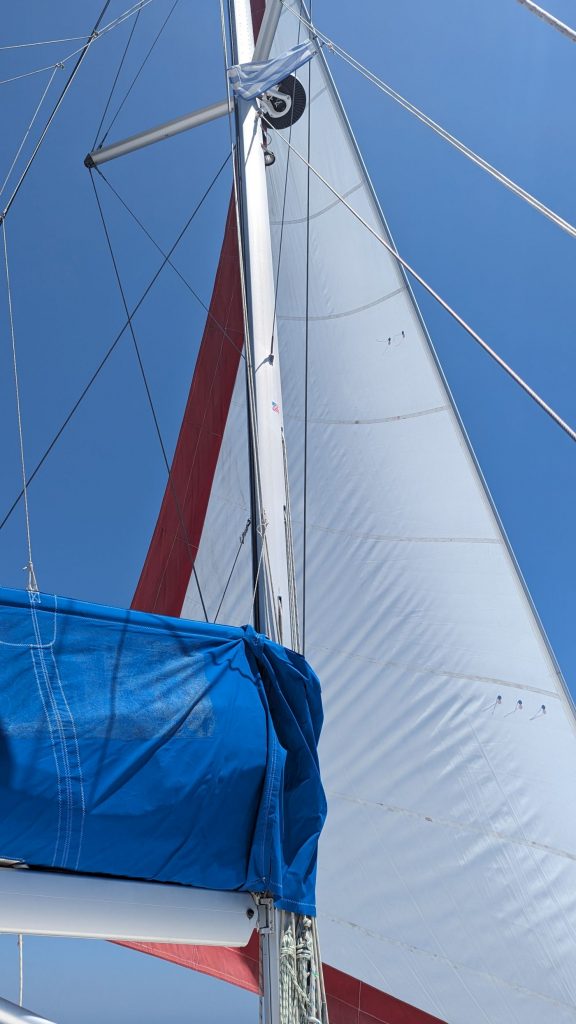
We didn’t have specific plans for Nidri but we ended up having a nice time. (We had hoped to take a hike to the Nidri waterfalls but it was too hot.) Jennifer and I did go on a shopping spree, however.
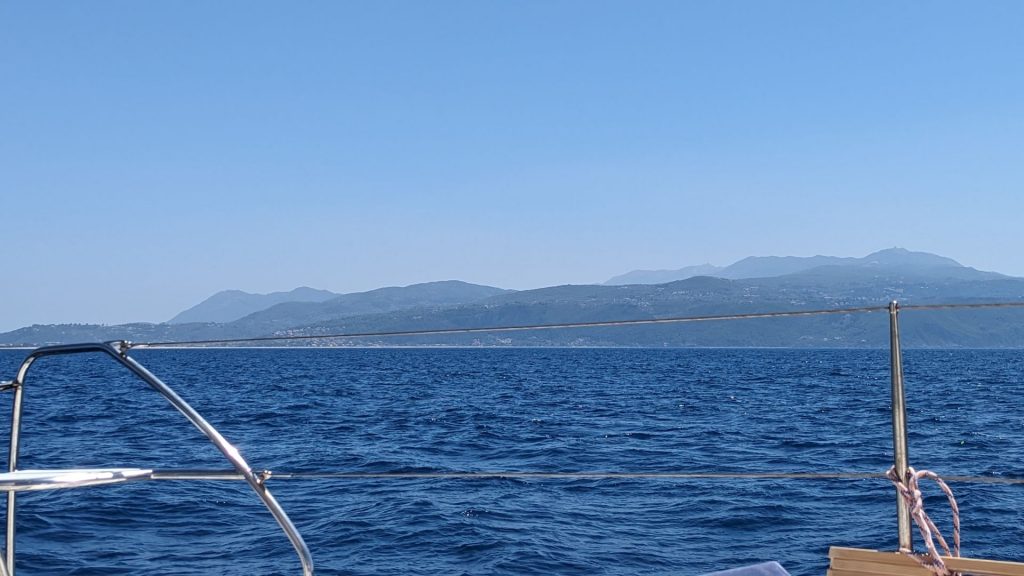
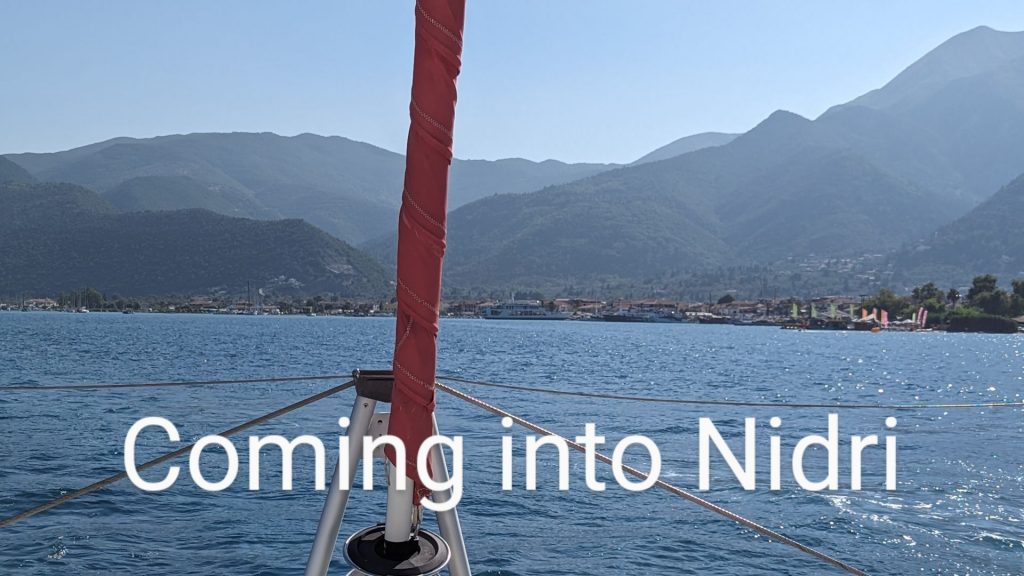
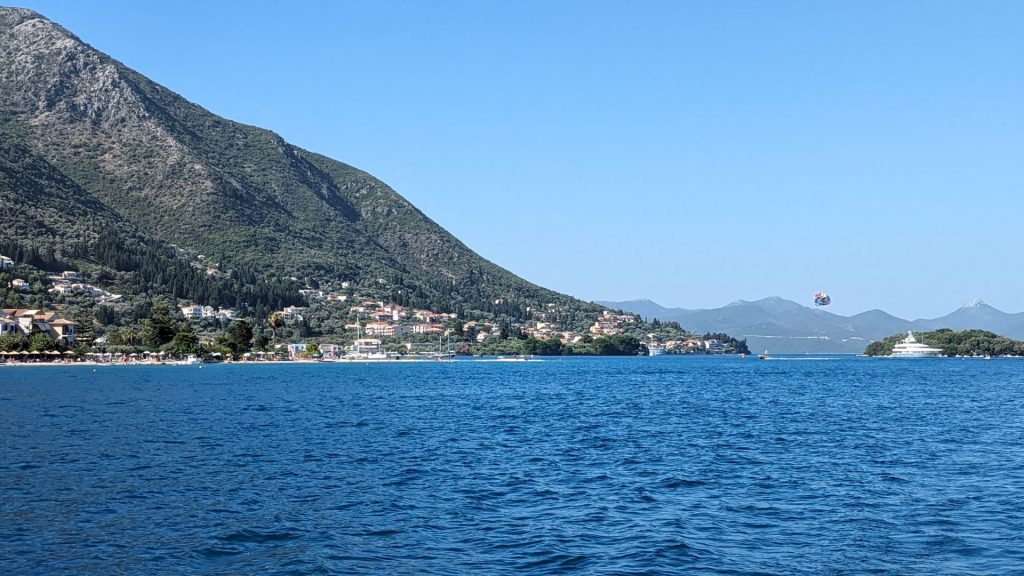
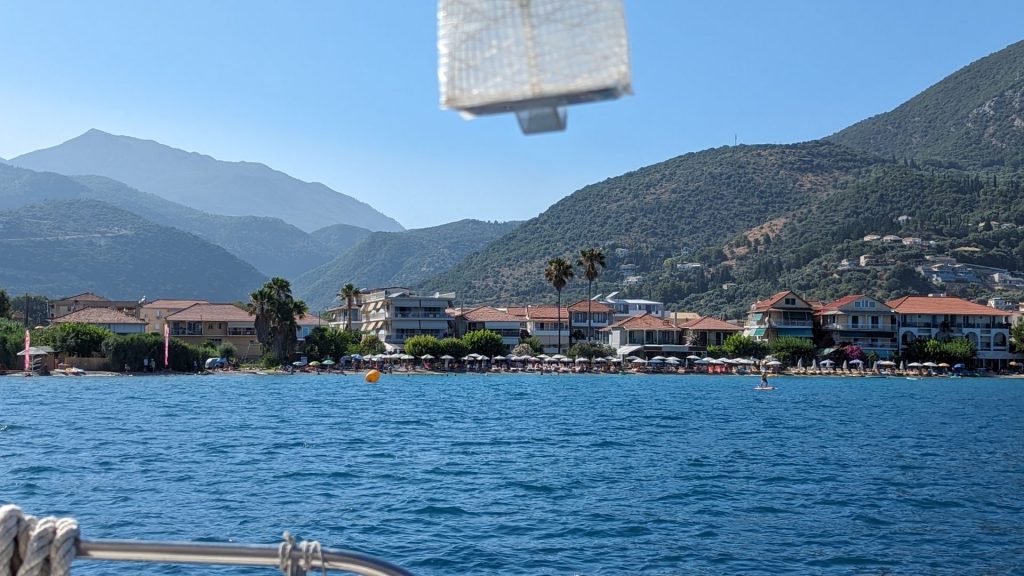
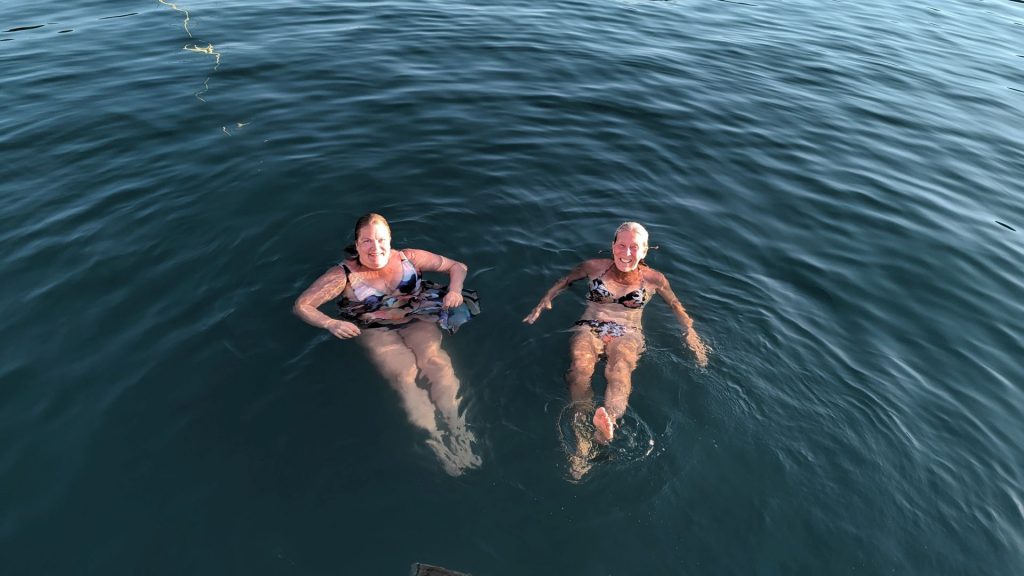
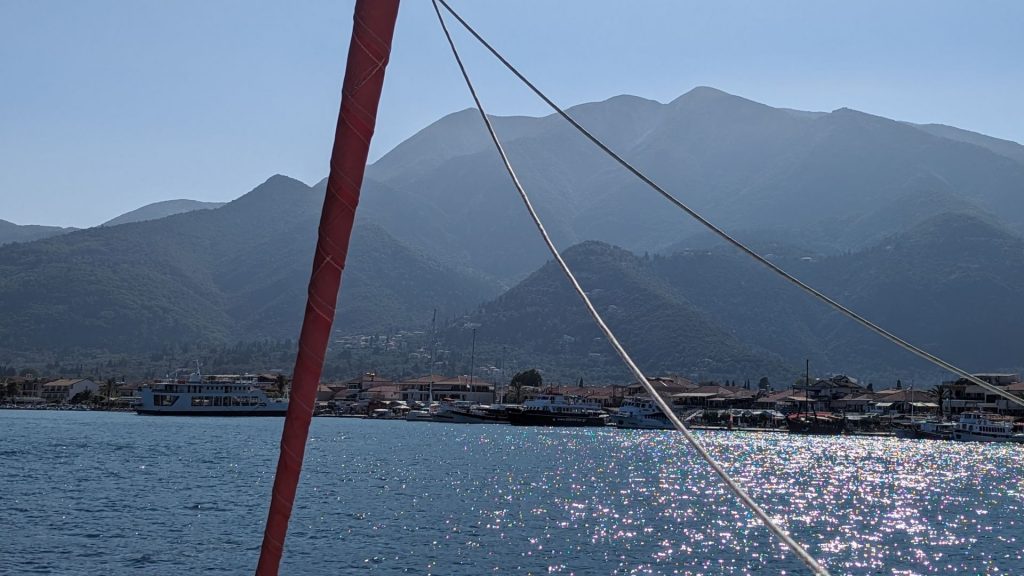
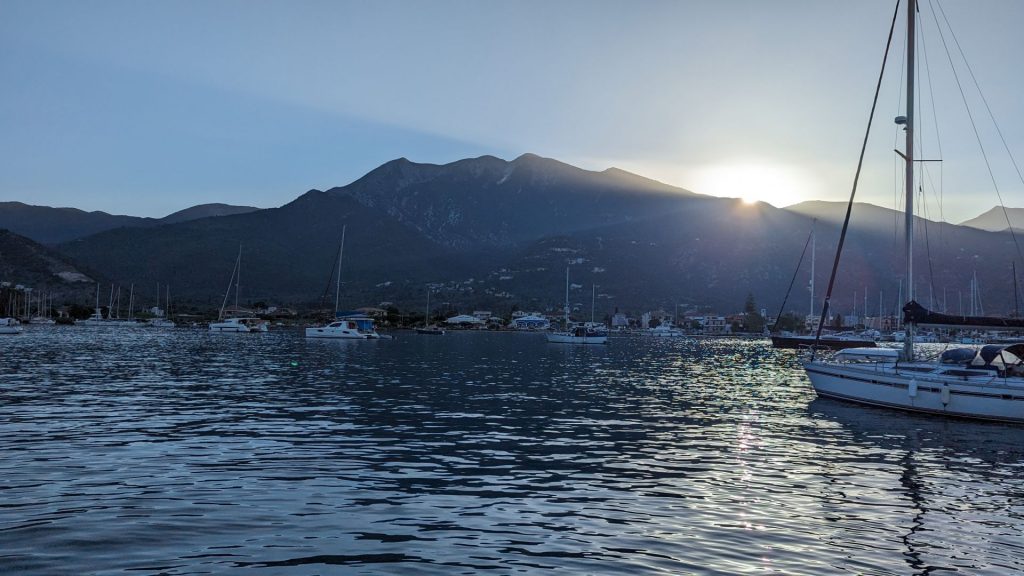
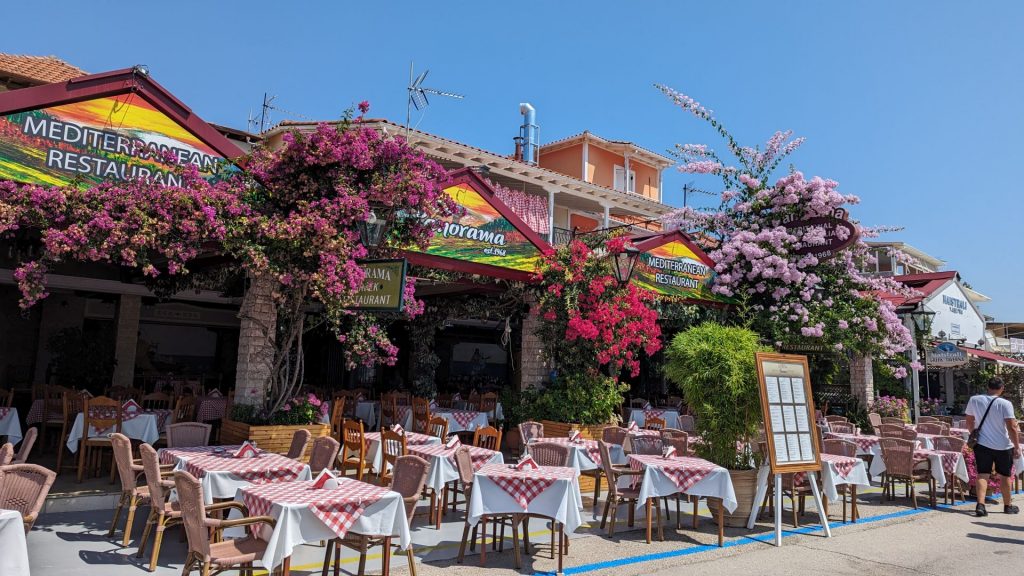
Here comes the long-awaited nudist section of our blog.
We were hanging out on Seahike. I was at the galley sink, looking out the front window. There, in broad daylight, in living color was a man (thankfully facing away from me) standing at the stern of his boat in his birthday suit. He just stood there. Perhaps drying off? A boat came into the anchorage with a full view of him and he just stood there. Perhaps a nudist? In any event, after being amused for a short time, we went back to our business. (Of course I took a picture! No, I won’t be posting it on this blog.)
This concludes the long-awaited nudist section of our blog.
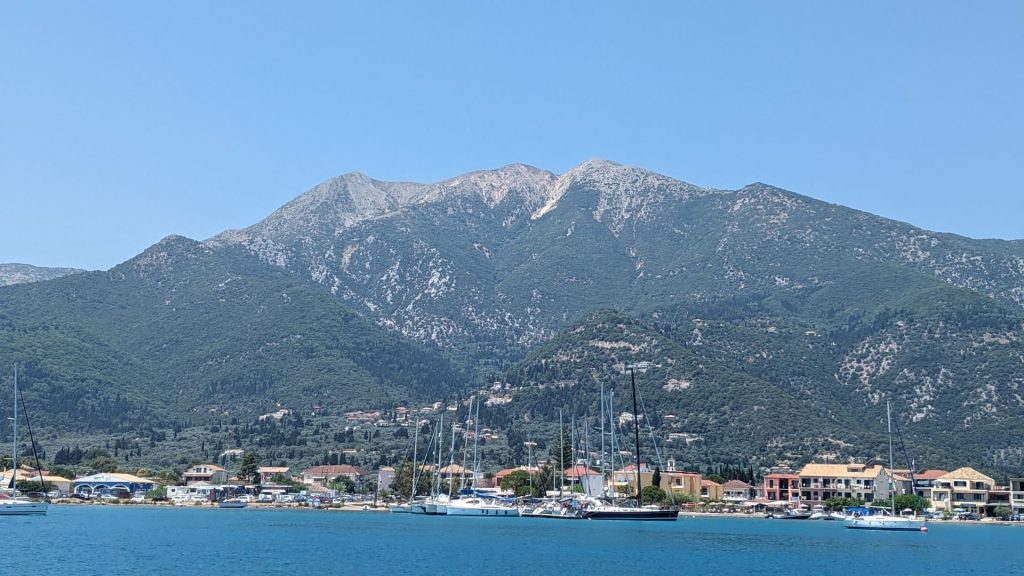
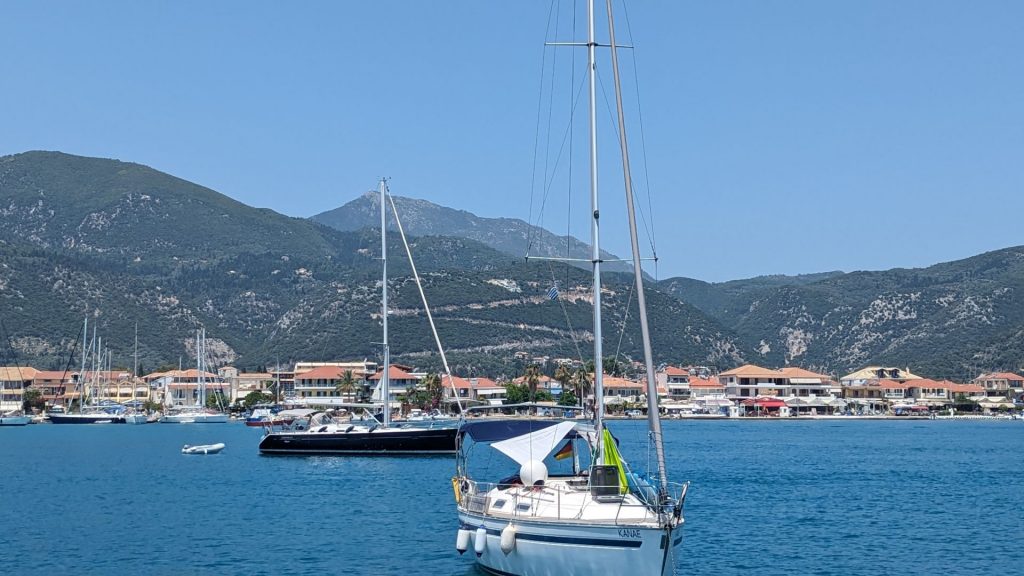
I don’t think I remembered to share “the best wine in Lefkada” with you. This, according to a couple of servers and a shop owner. I can’t pronounce it, but here is a picture. It is quite good. Refreshing and light.
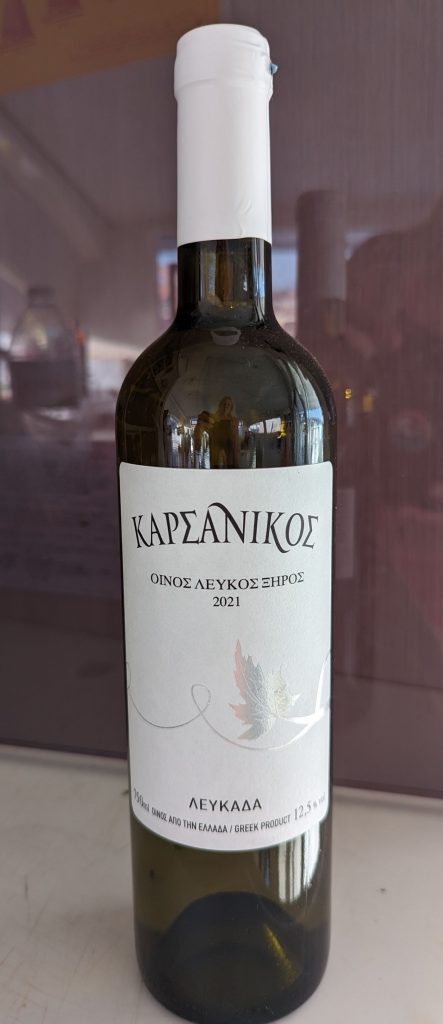
Our next stop was Vathy, Meganisi. There are several cities named Vathy in Greece. Vathy is from the Greek word meaning “deep” or “depth” indicating a “deep harbor,” so it is not unusual that many cities bear the name.
Vathy (or Vathi) is one of the main villages in Meganisi. It is located on the northeast coast of the island, at the end of an inlet. I’d heard that Meganisi was a beautiful island and that Vathy, in particular, was a “must see.” Plus it was next door to Lefkada, so it seemed like a good bet for our next stop. We were not disappointed!
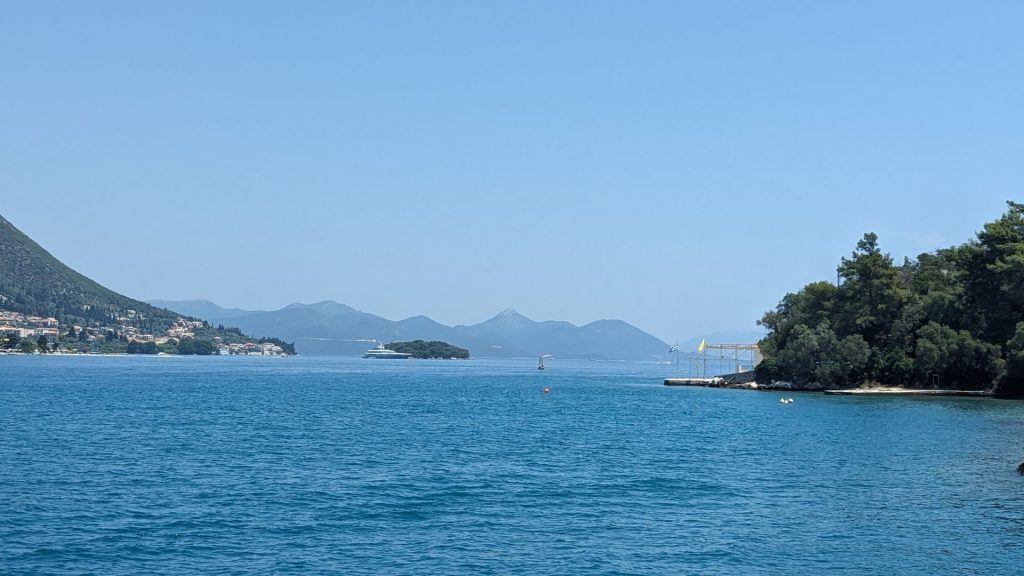
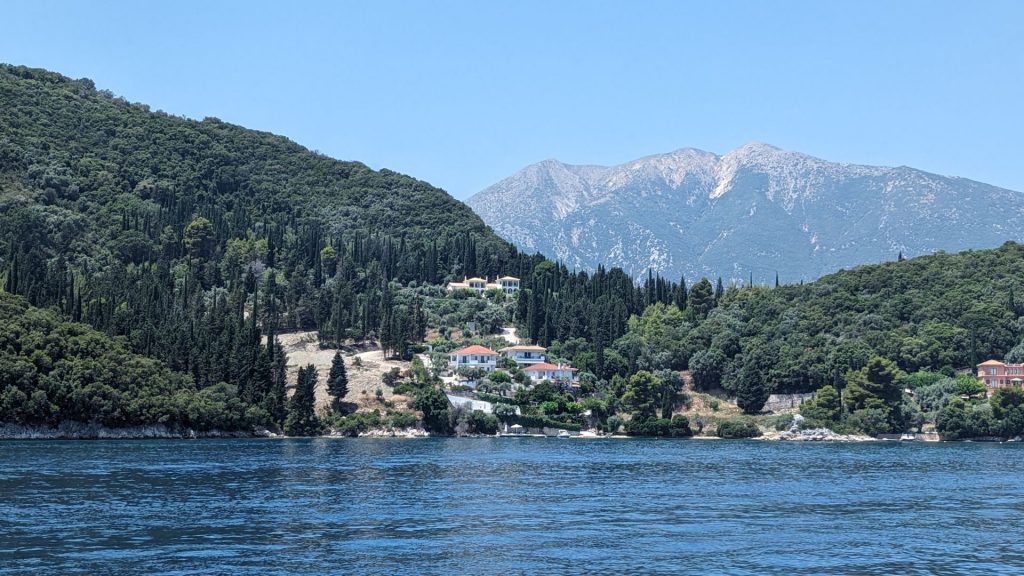
We were surprised and delighted to see some dolphins along the way. They didn’t stop to play with our boat as dolphins tend to do. We think they were feeding because they were forming circles.
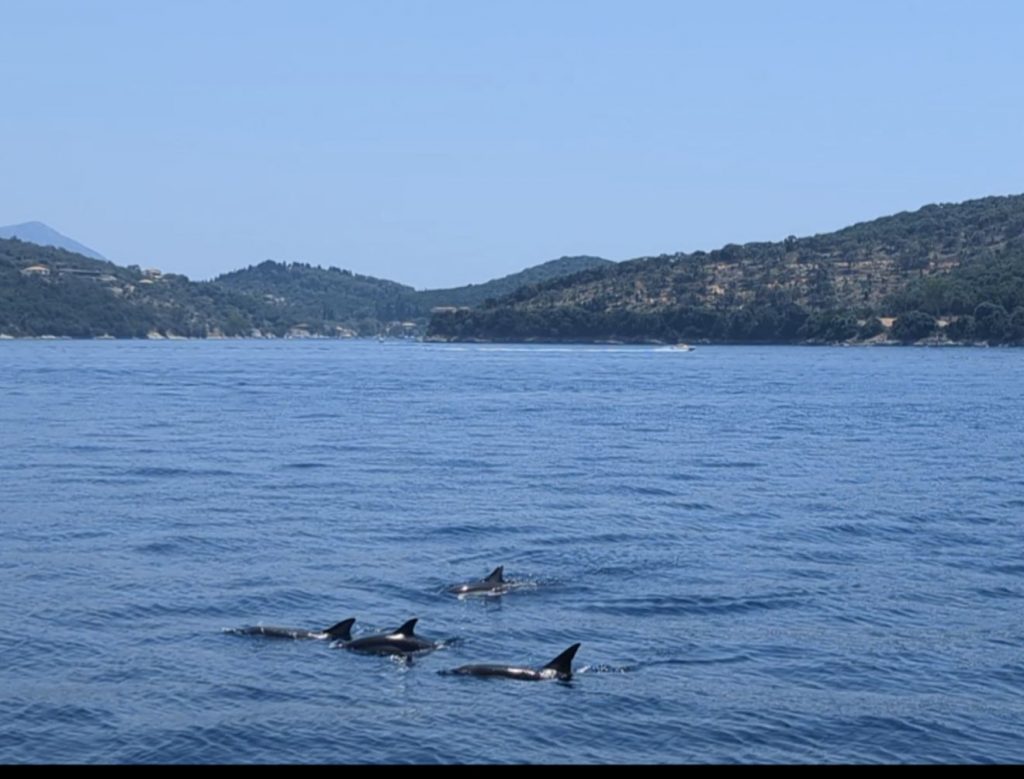
Vathy, Meganisi is a beautiful village. We initially moored on the quay nearest the town, but were told that there was a price for that. We are cheap, so we asked if there was a place to anchor for free. There wasn’t, but they told us we could moor on the opposite quay for free. So, of course that is what we did: stern-to, anchor with lines to the quay.
Here are some pictures of this delightful and pretty village.
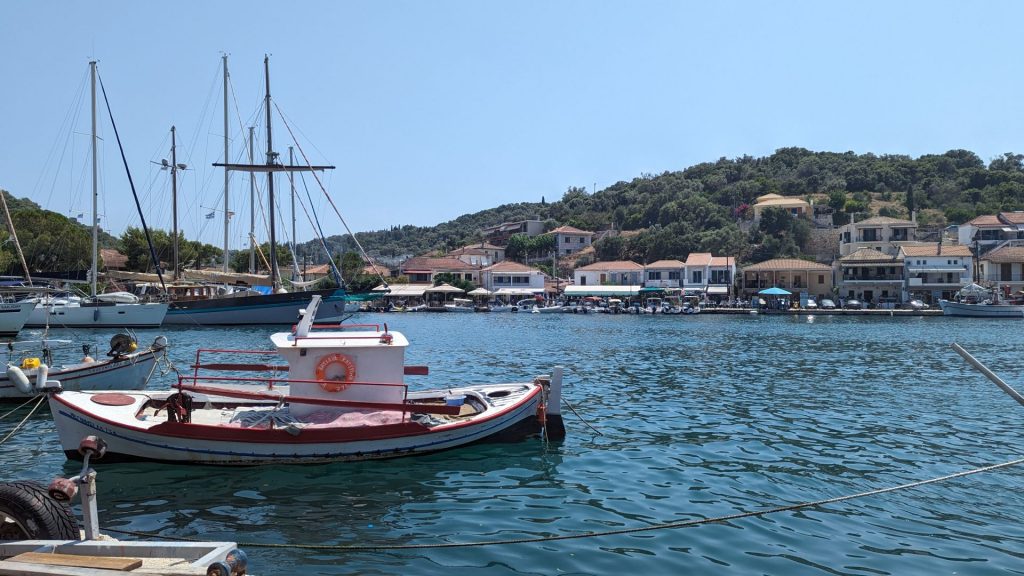
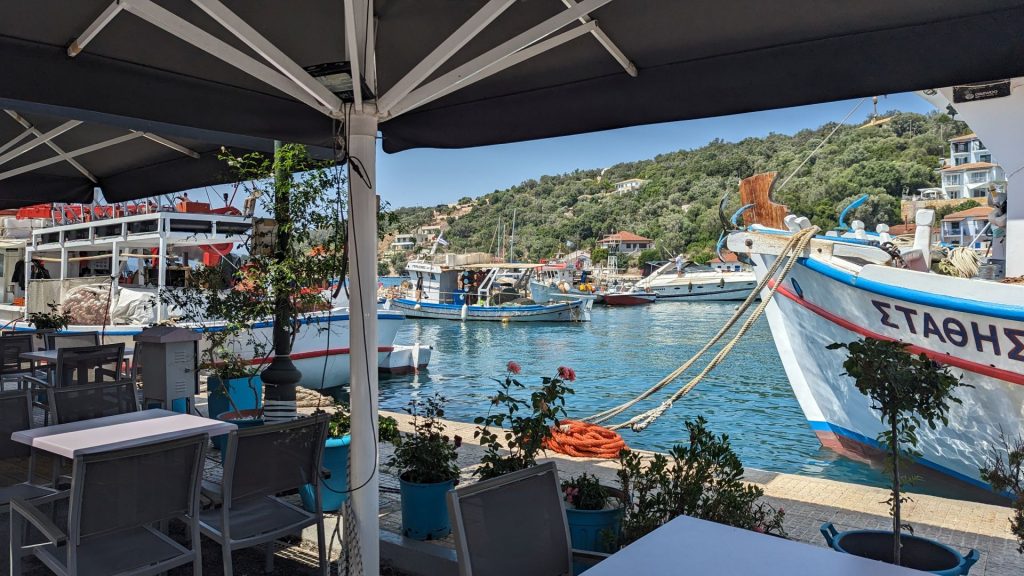
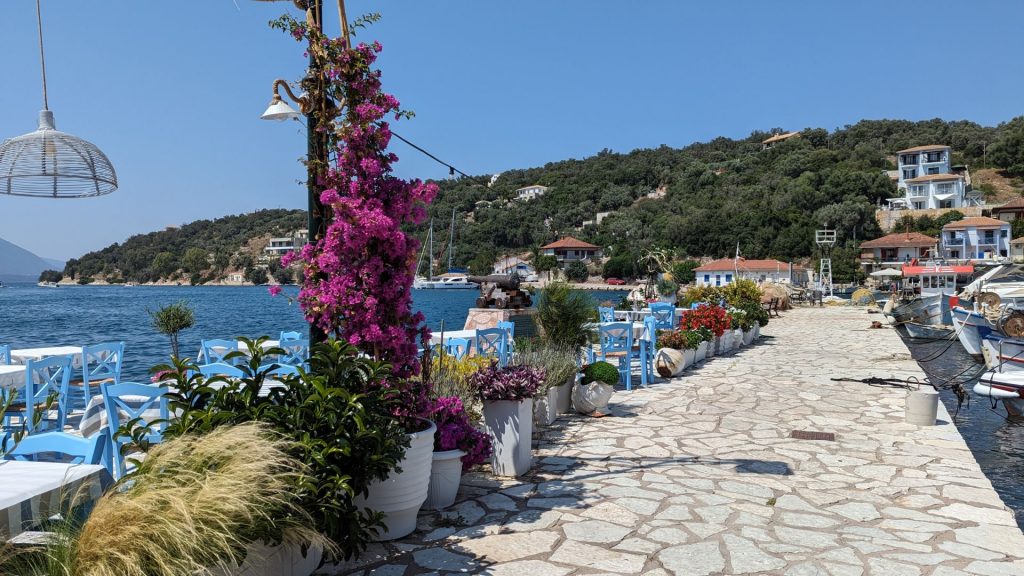
The picture below is of a very typical sight in Greece: a restaurant’s tables are located next to the water but the restaurant’s front and kitchen are across the street. Waiters must cross the street dozens of times a day to do their job!
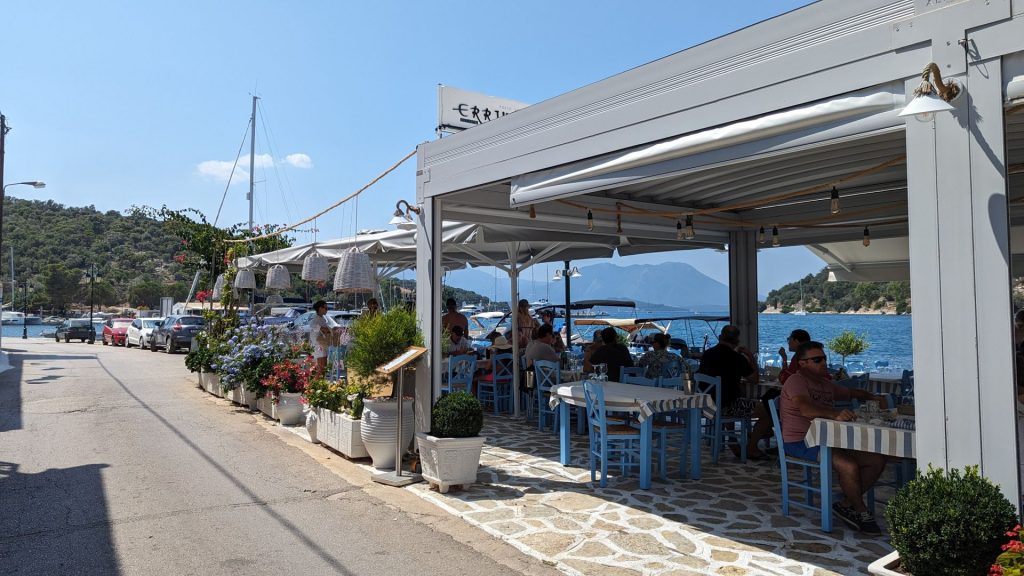
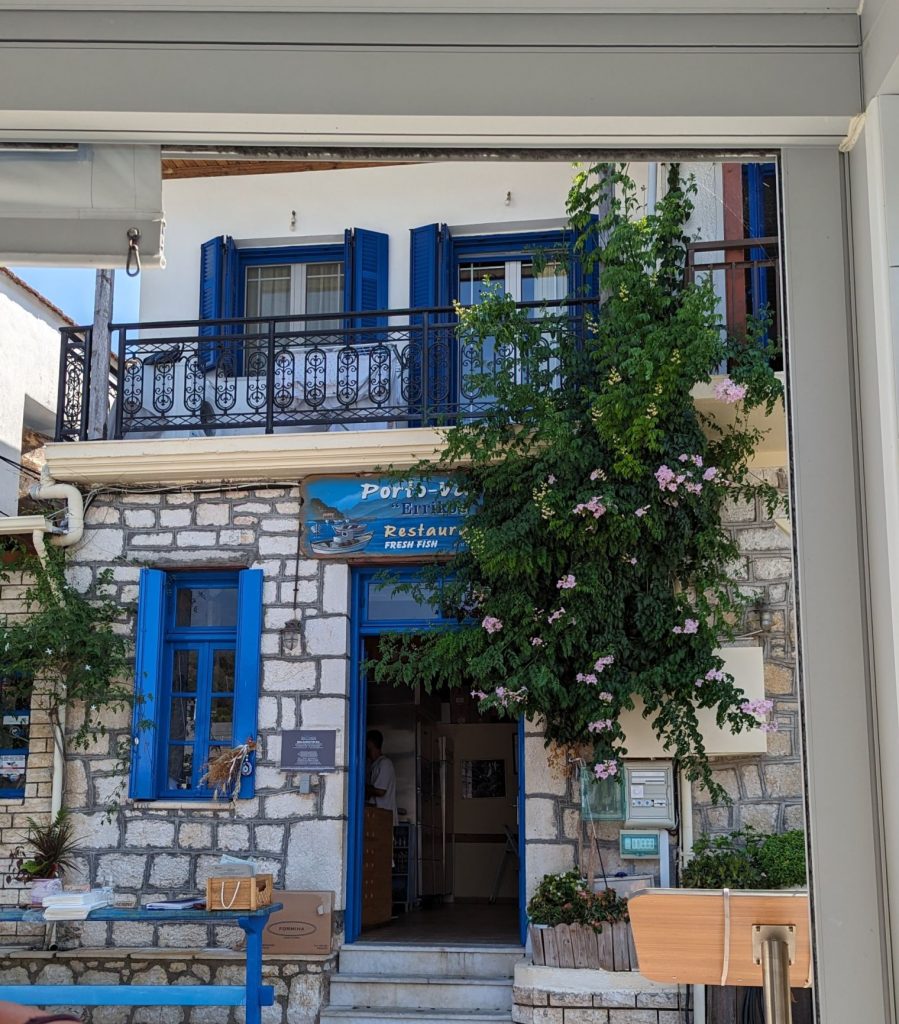
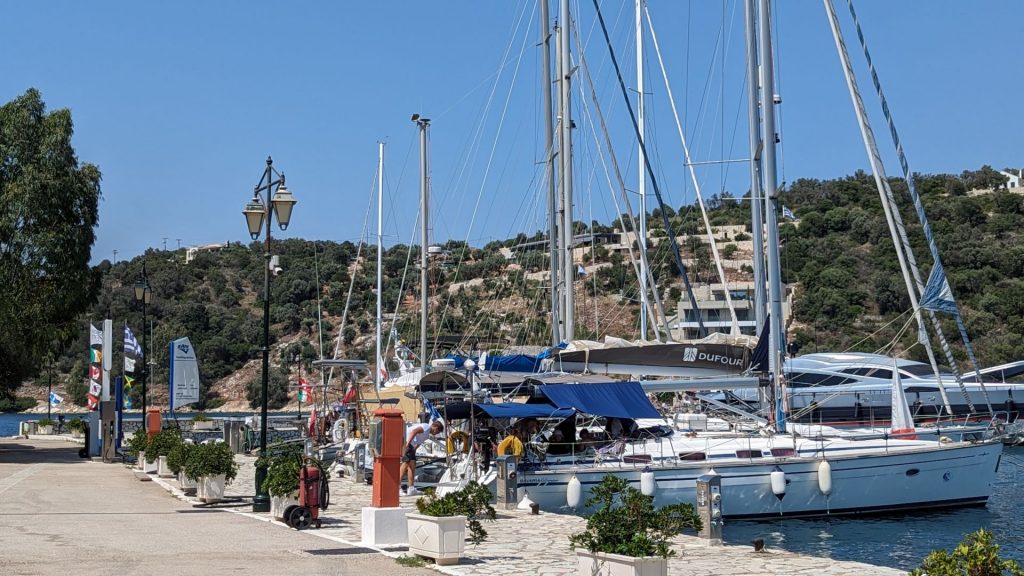
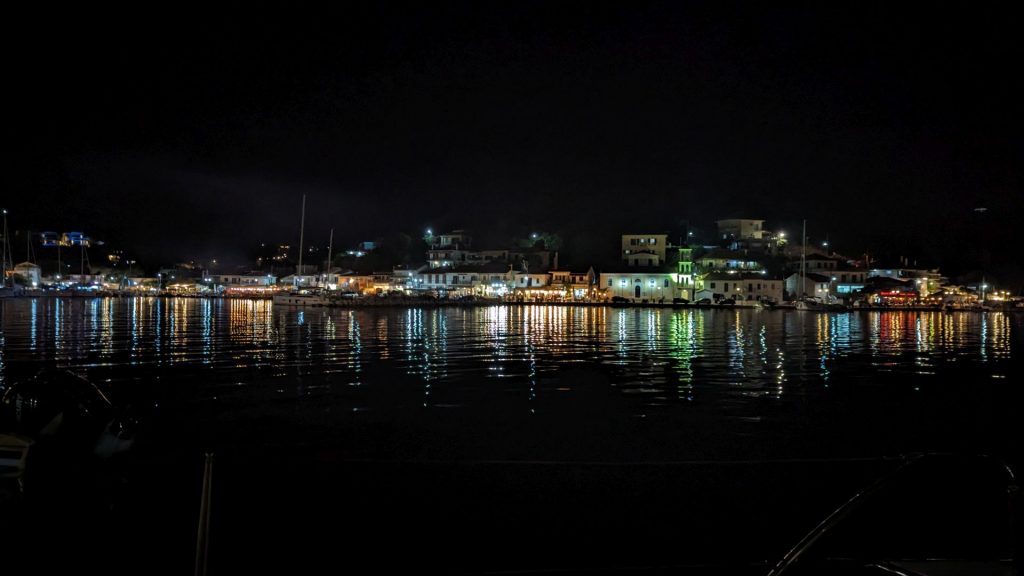
The next morning, Jennifer and I went for a swim at the beach that is just a few minutes’ walk from where we were moored. There were only four of us at the beach. The water was crystal clear and the view was, as you would expect, stunning. Here are views along the way to the beach and at the beach.
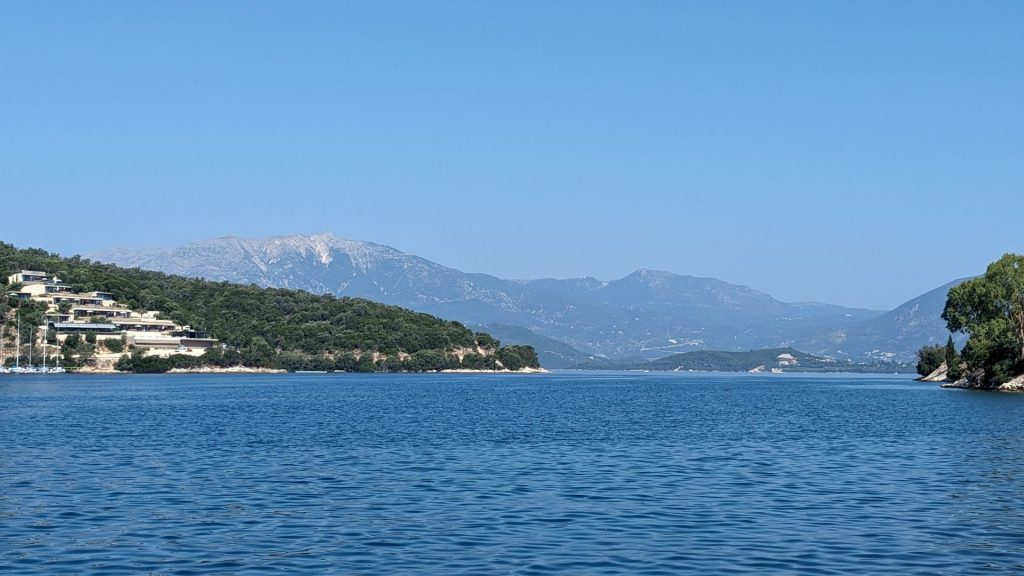
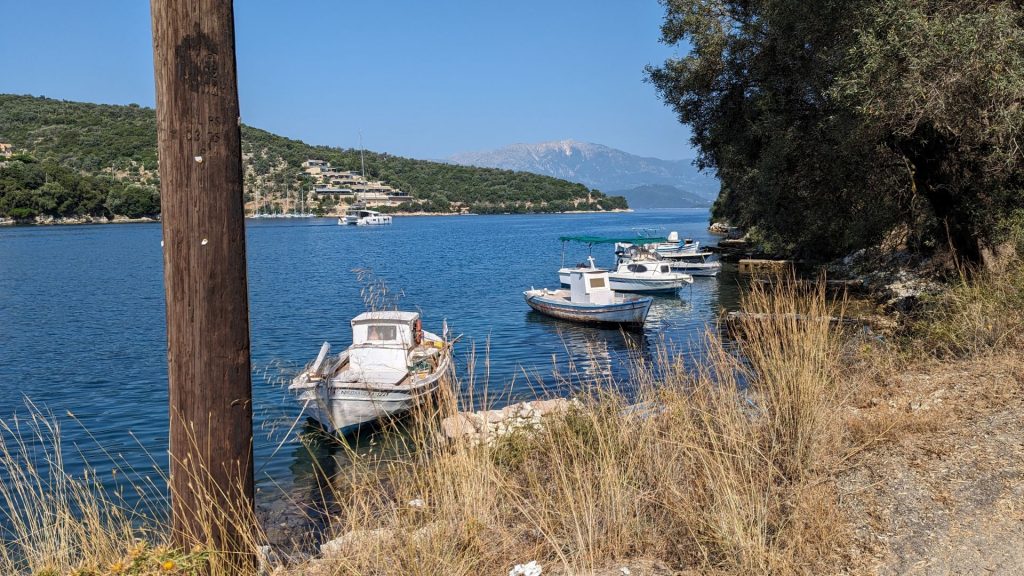
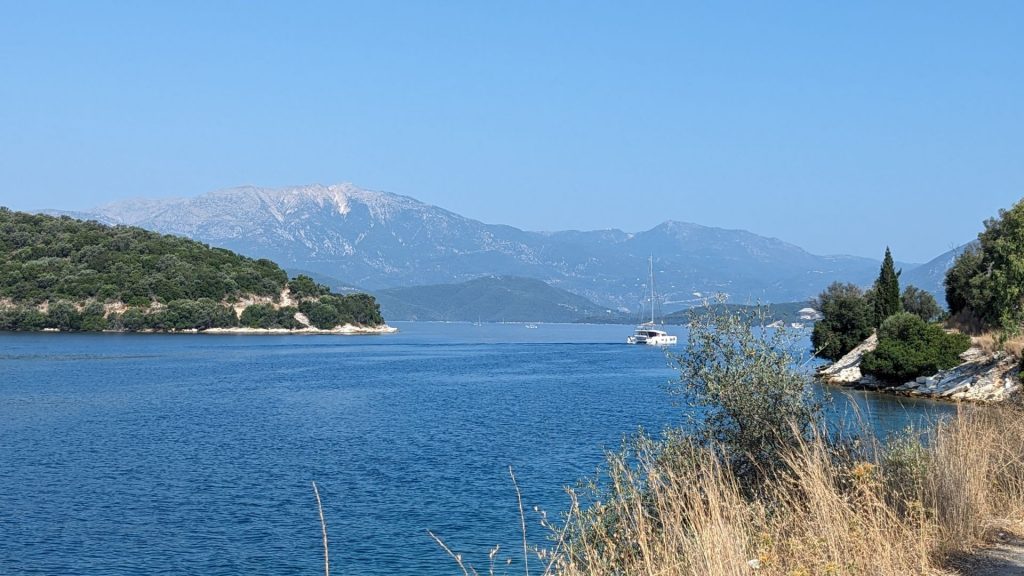
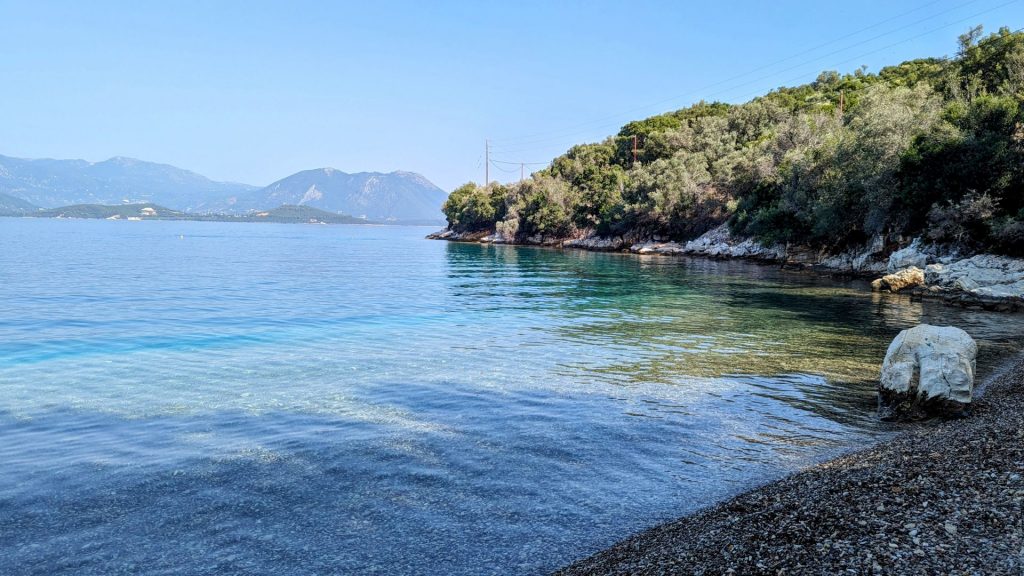
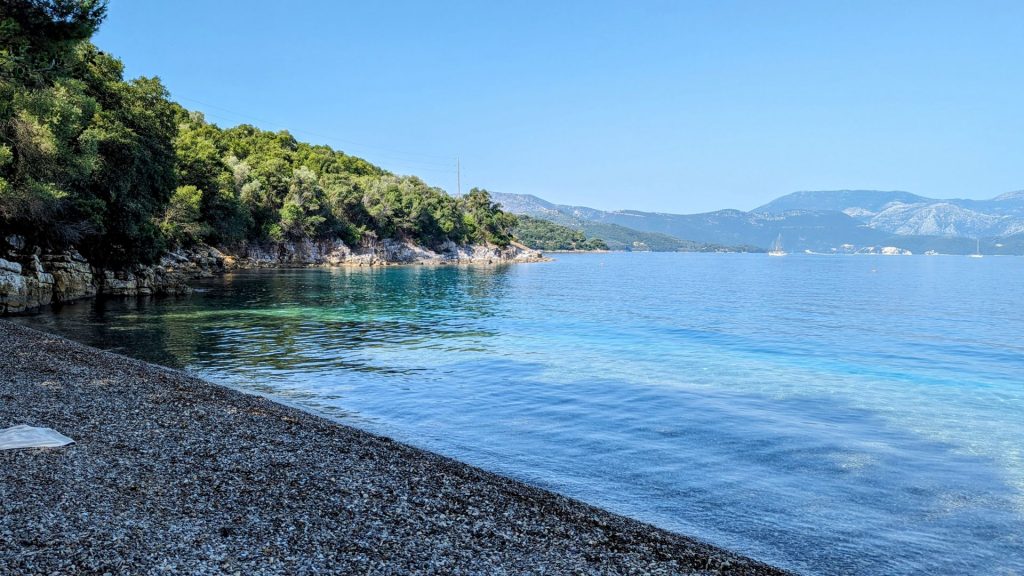
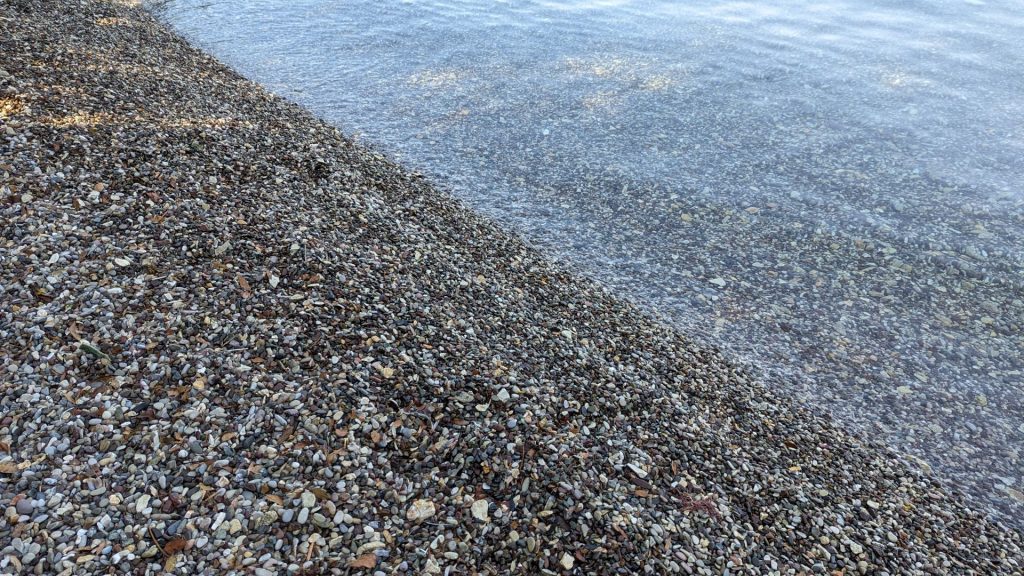
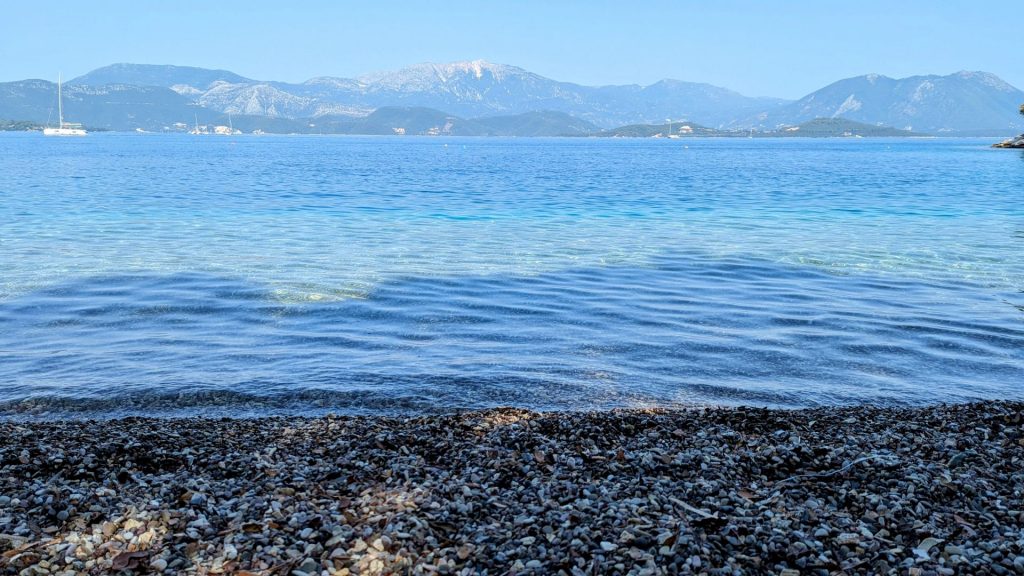
Feeling completely refreshed and ready for the day, we released Seahike from the quay, pulled up the anchor, and headed to Kalamos Woods Bay anchorage. It is located on – you guessed it – Kalamos. It was reportedly a good anchorage with yet another fine beach: Asprogiali Beach.
I should probably mention that the temperature was pretty darn hot at this point and had been for several days. According to the weather report, it was 91 degrees Fahrenheit but felt like 99. Okay, that is hot and we were kind of melting, but not as bad as the Wicked Witch of the West when she gets hit with water. As such, we were suddenly extremely interested in beaches. We skipped several hikes that we’d wanted to take because it was simply too hot.
Asprogiali Beach is lovely and big. There were numerous boats there, including a tourist “pirate ship” type boat that delivered a good number of pirates, or perhaps just swimmers. But the beach was big enough to hold all of us without ever feeling one bit crowded. Pictures:
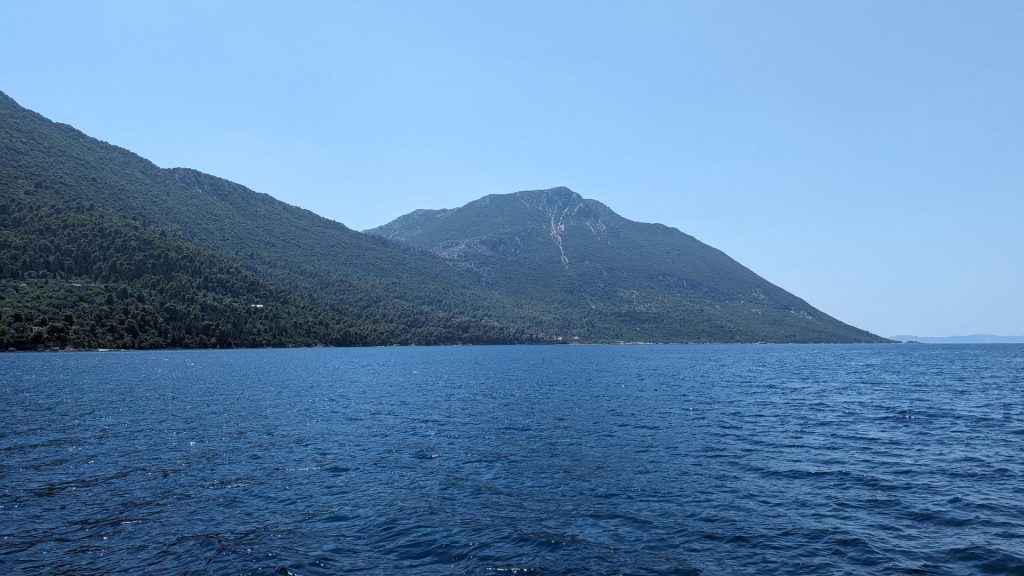
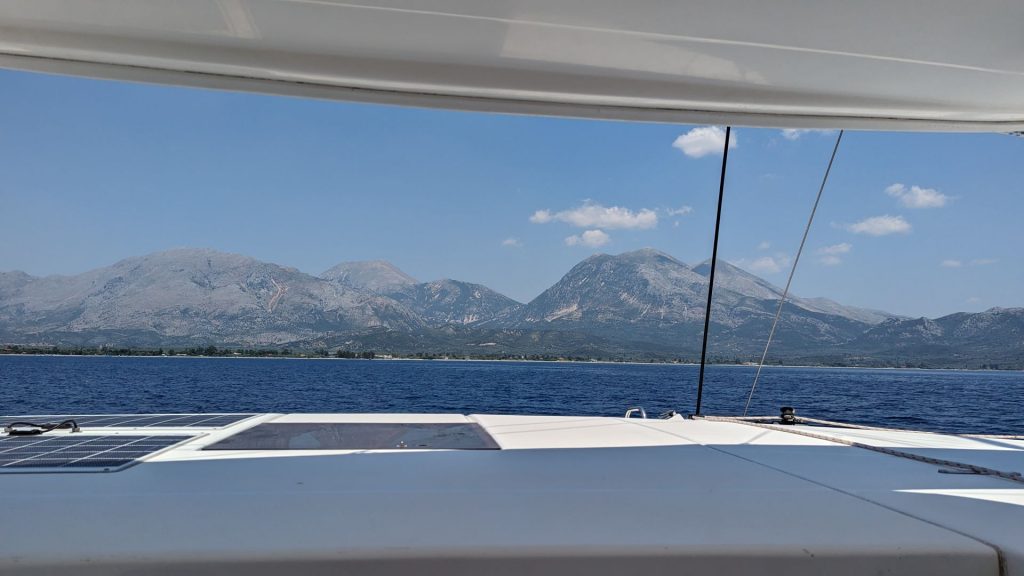
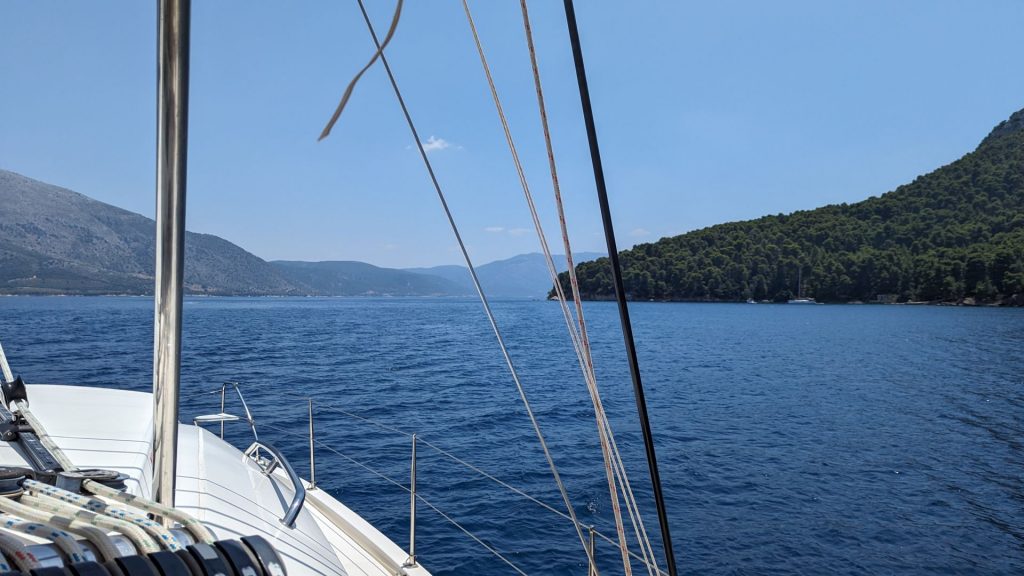
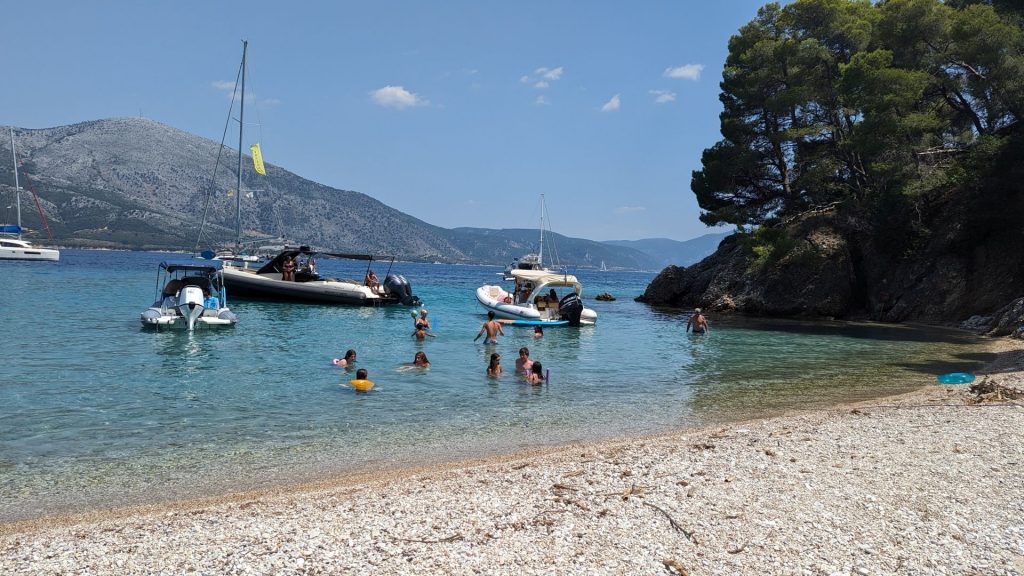
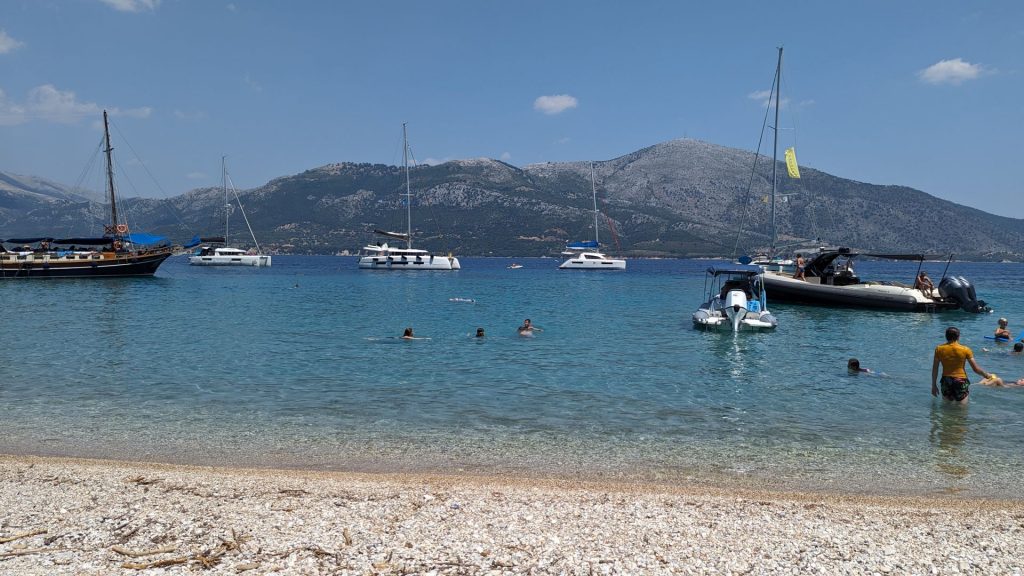
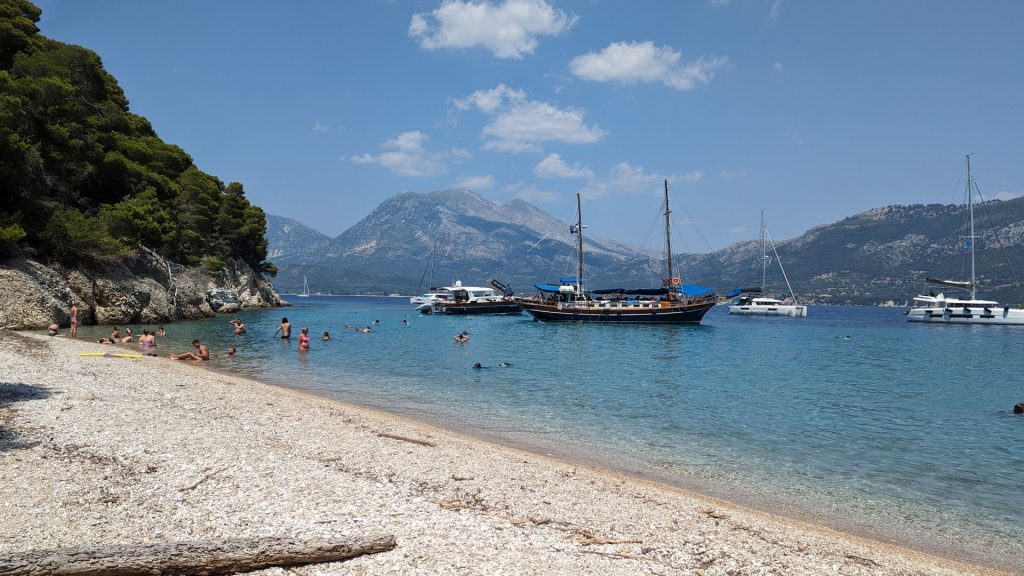
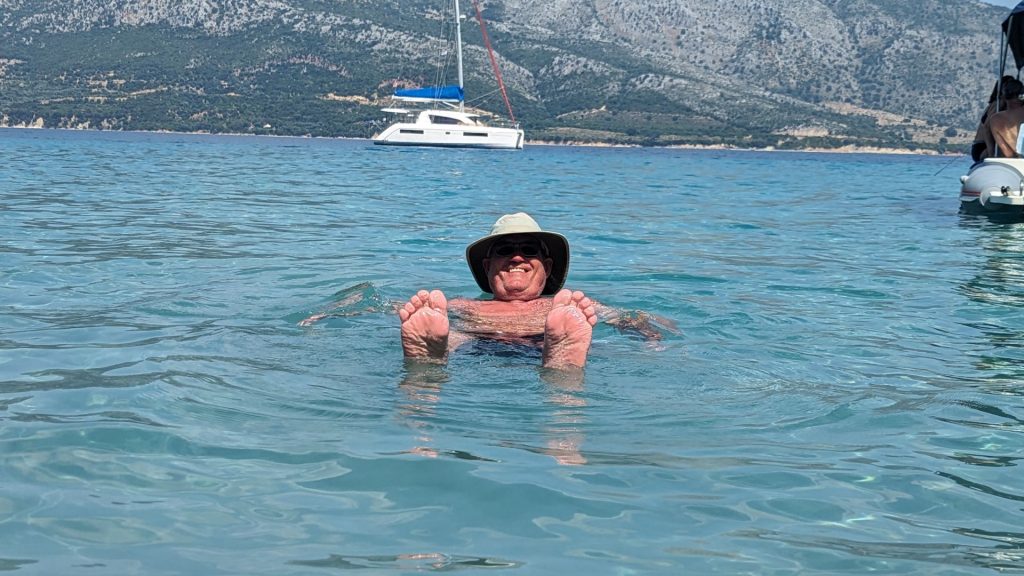
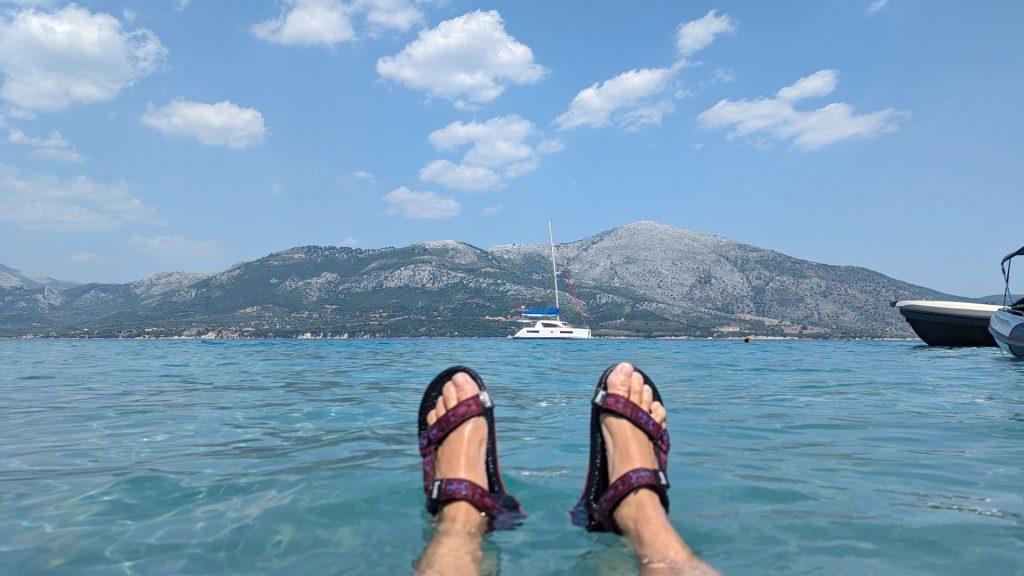
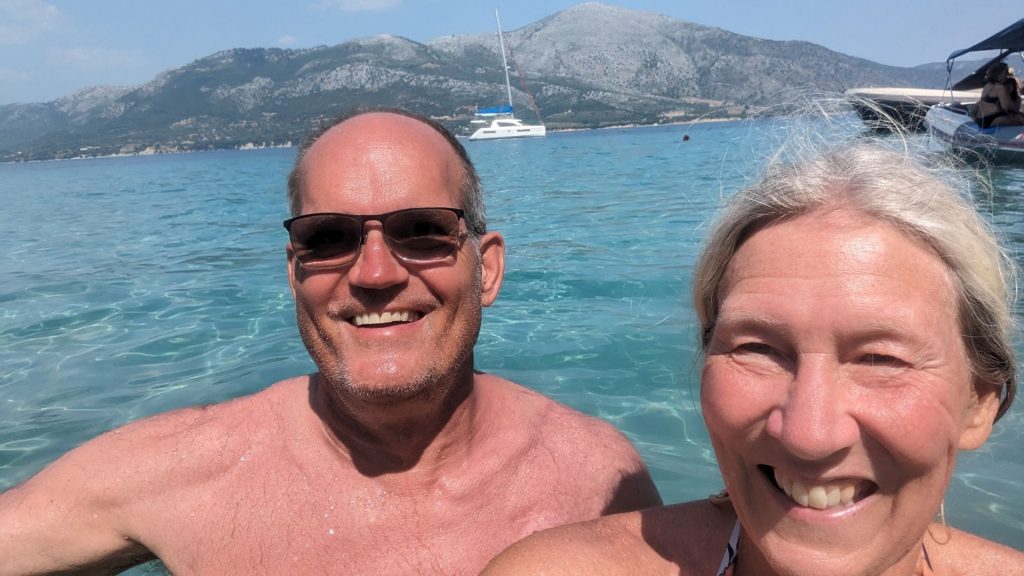
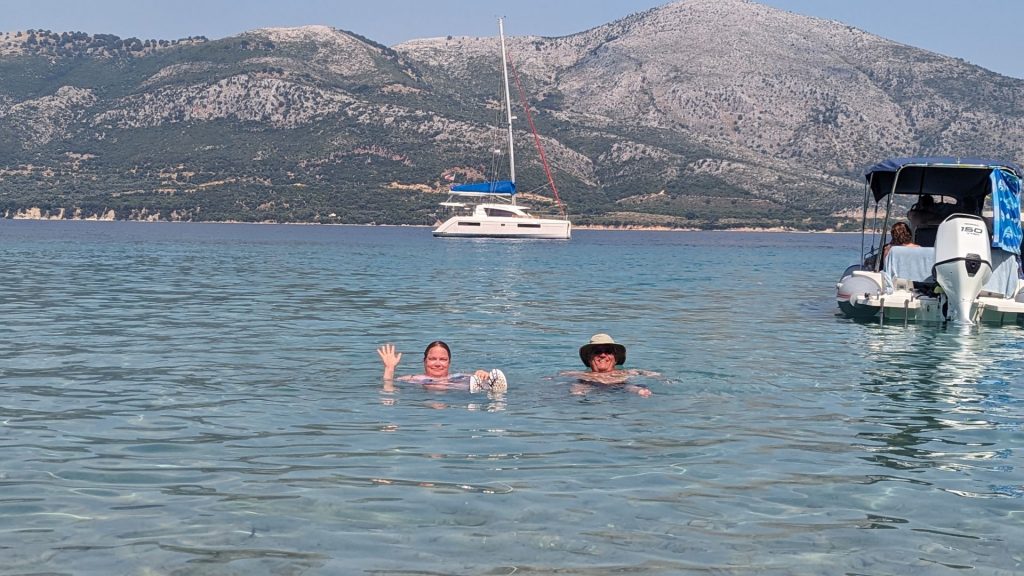
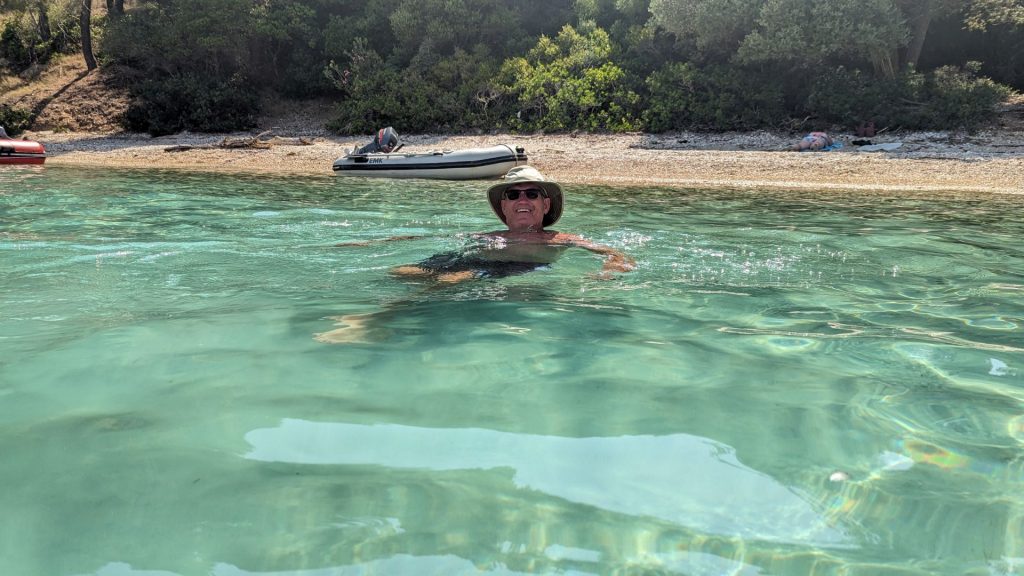
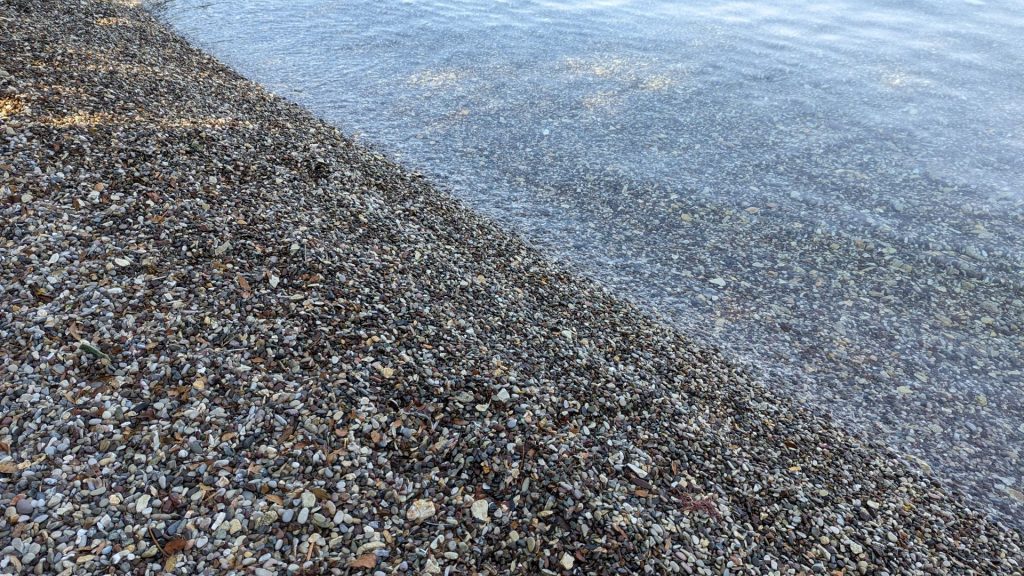
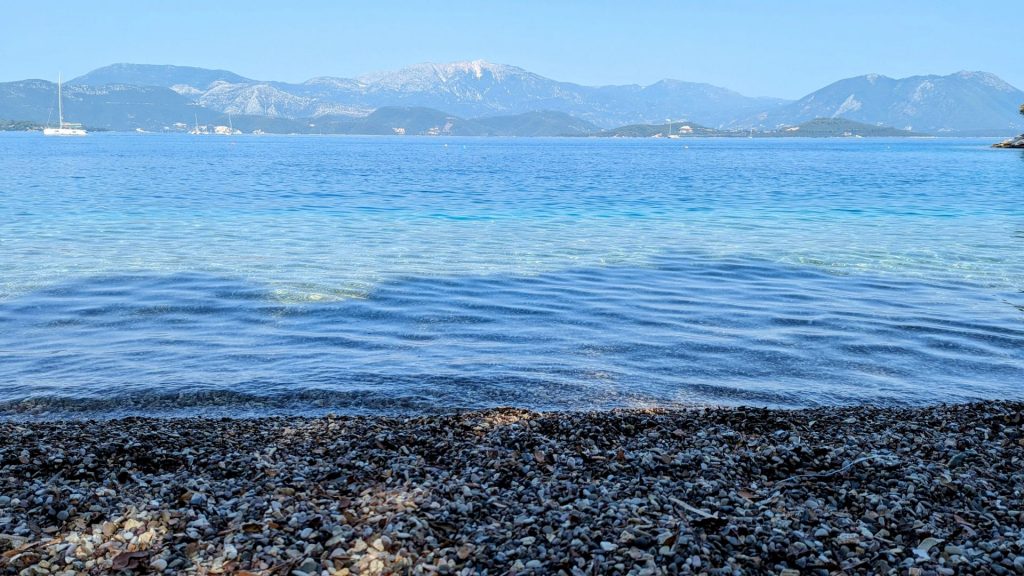
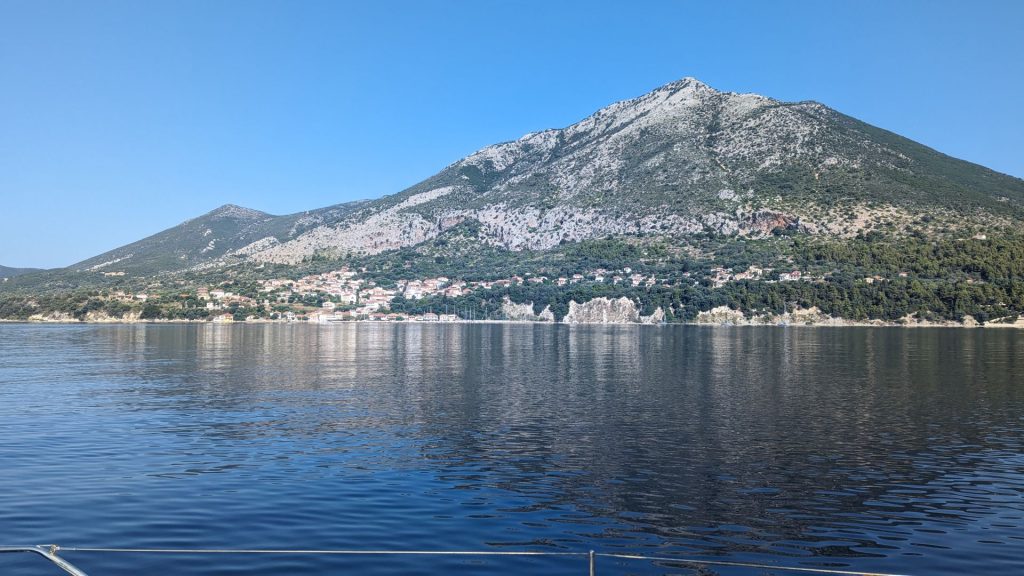
By the time the sun set there were only three boats left. We had a lovely and quiet night. It was, indeed, a fine anchorage.
The next day, July 18, was time to visit yet another Vathy (or Vathi). This one was on Ithaca (or Ithaki) Island. Vathy is the capital of Ithaca and the largest settlement on the island.
A little history: In the Middle Ages, the Ionian islands were subject to frequent pirate raids, which forced inhabitants to build settlements inland. Vathy was formed in the 16th century, during the late Venetian rule, when the families living uphill in the settlement of Palaiochora began moving down to Vathy. In 1807, the French built a fortress on the Loutsa hill at the port entrance. The dockyard at the port operated throughout the 19th century, and over 200 ships (!!) were built during the period. Wealth from shipbuilding, trade and fishing caused expansion of population and house construction. During British rule in the 19th century, the population rose to about 5,000. However, in the 1920s naval activity dwindled, and the economy of Vathy stagnated. Then the earthquakes of 1953 almost destroyed the village, leaving only a few buildings standing. Fortunately, most of the ruined Venetian buildings were rebuilt by the residents. Vathy is considered a traditional preservable settlement and any construction that is not similar to the traditional architectural style and color is prohibited by a law voted in 1978.
Here are a few pictures of the voyage to our next destination. Notice the lack of wind . . . again.
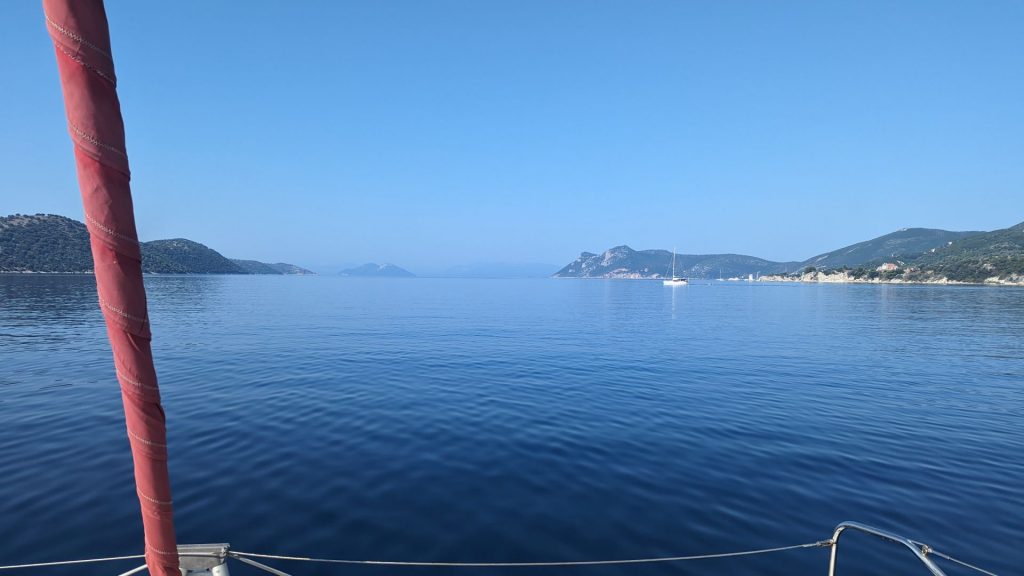
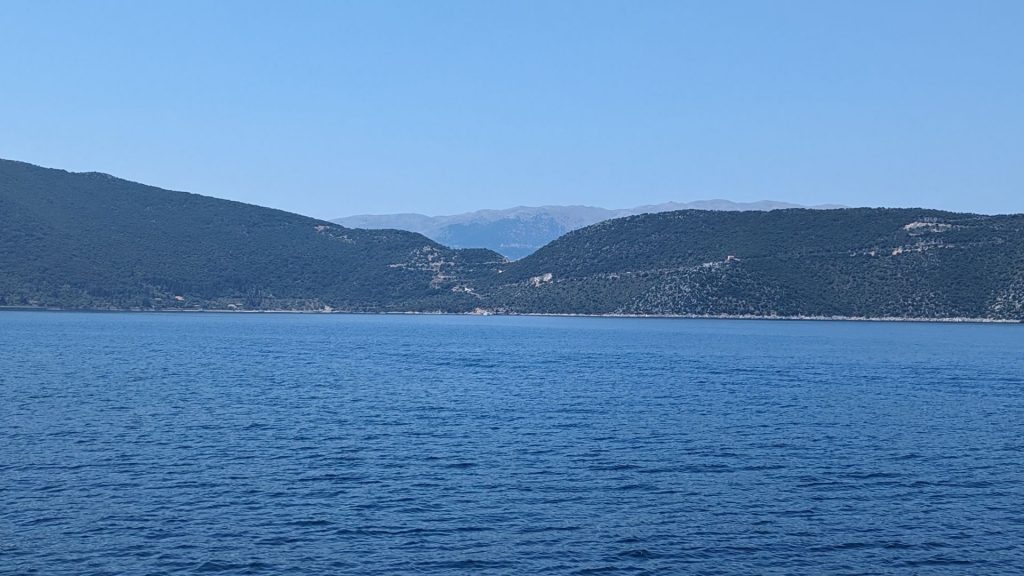
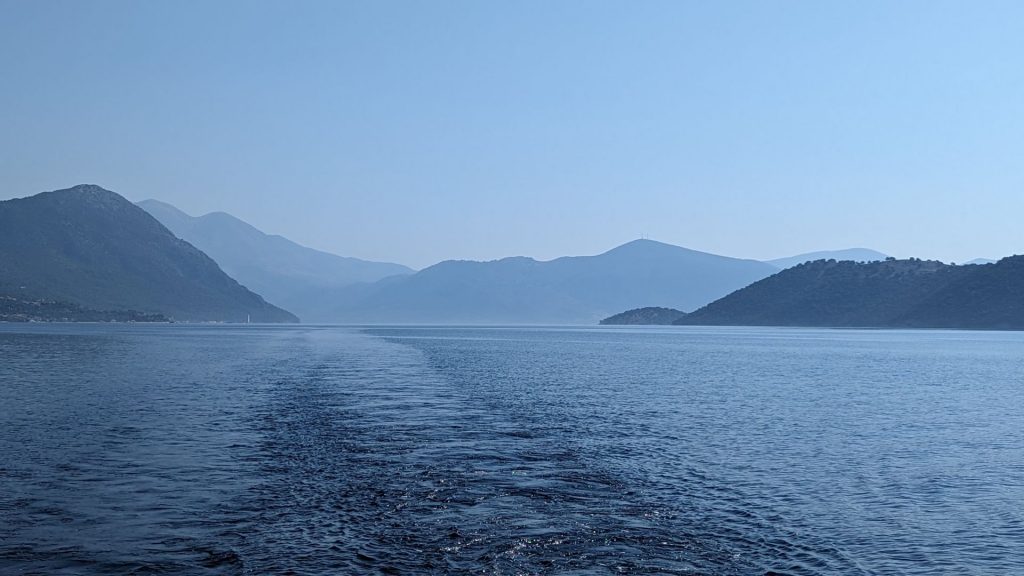
Vathy is located in a deep natural harbor. We must have missed the “deep” part, because we anchored in Vathy Bay in just 15 feet of water. (Maybe “deep” is describing the harbor, not the depth of the water.)
It is fun to approach Vathy because there appears to be nothing there and then, voila!, there is the (deep) harbor. This is a very big bay.
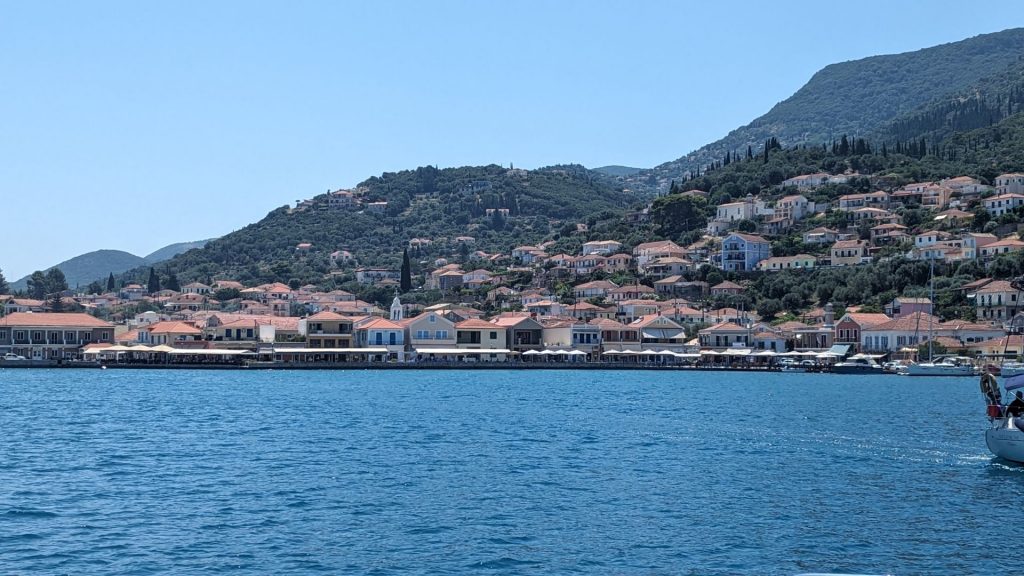
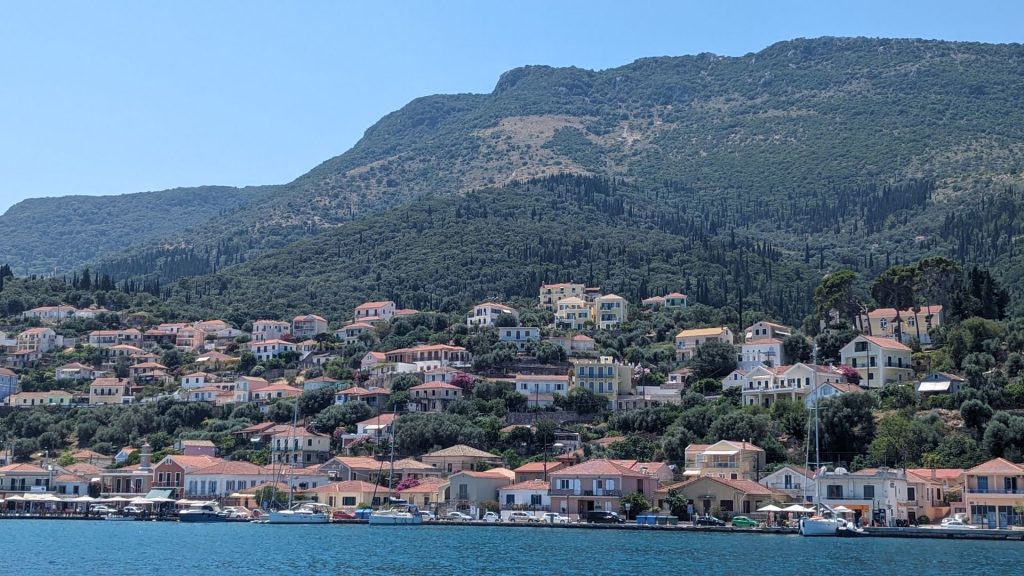
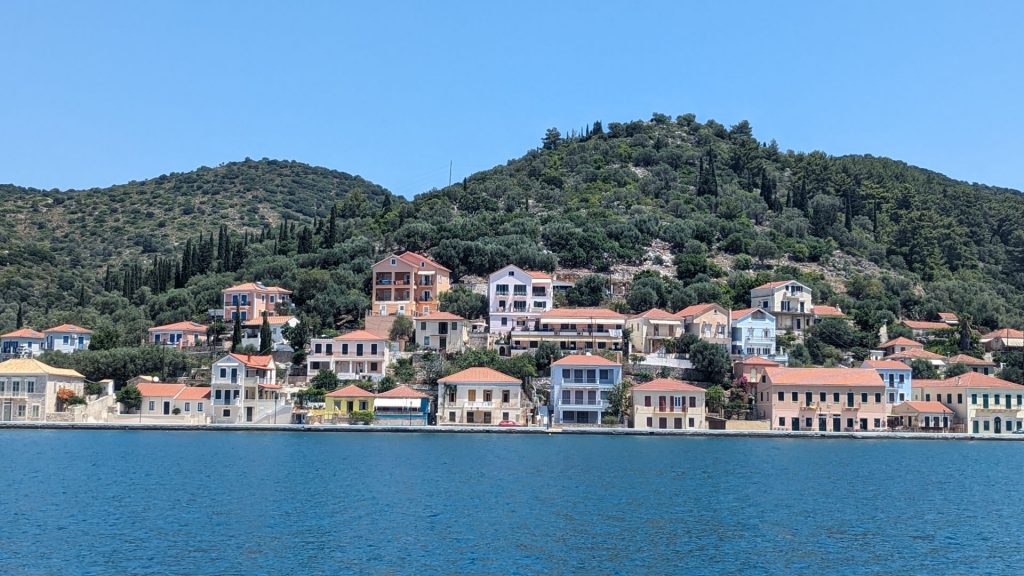
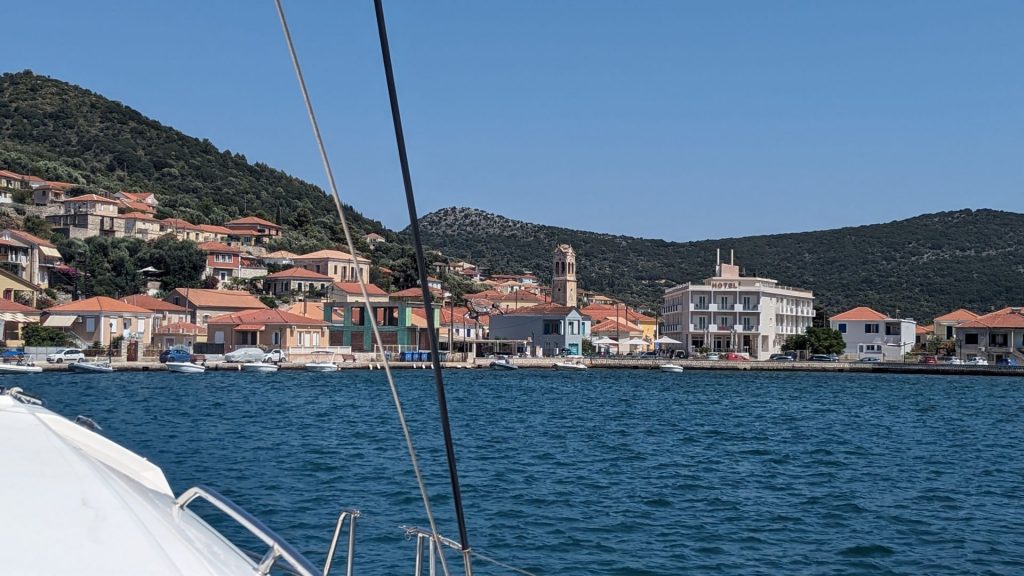
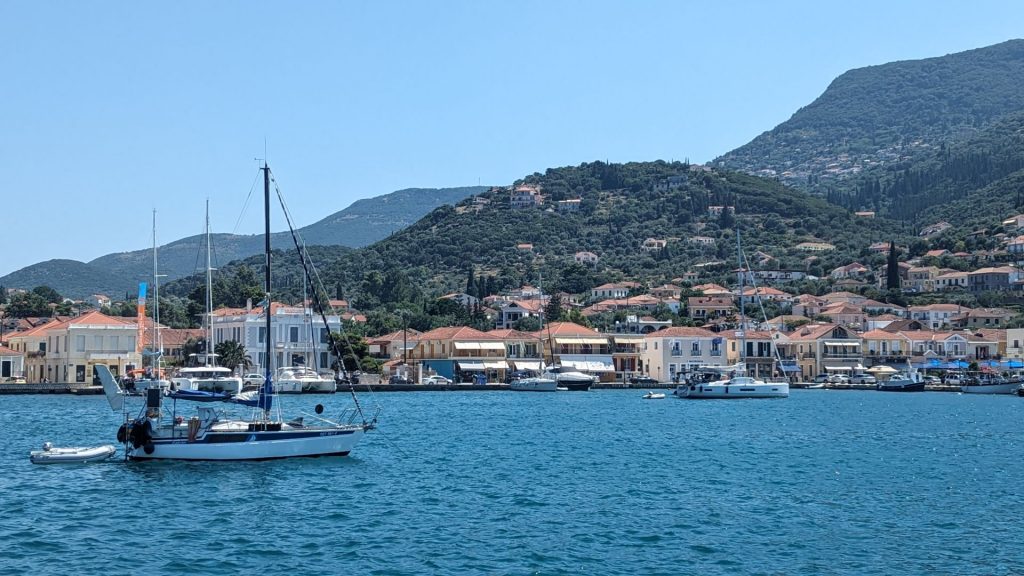
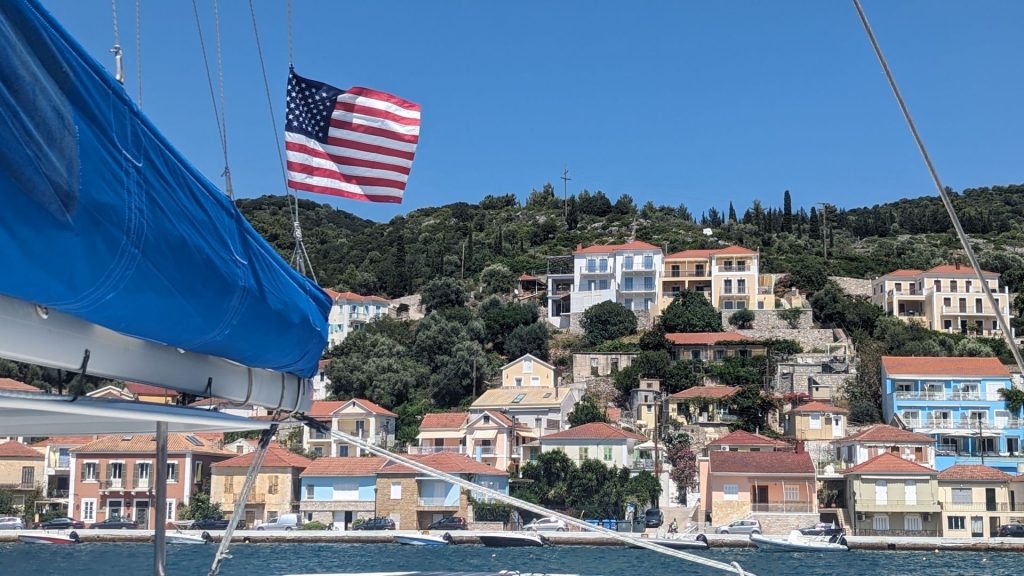
And now some views ashore.
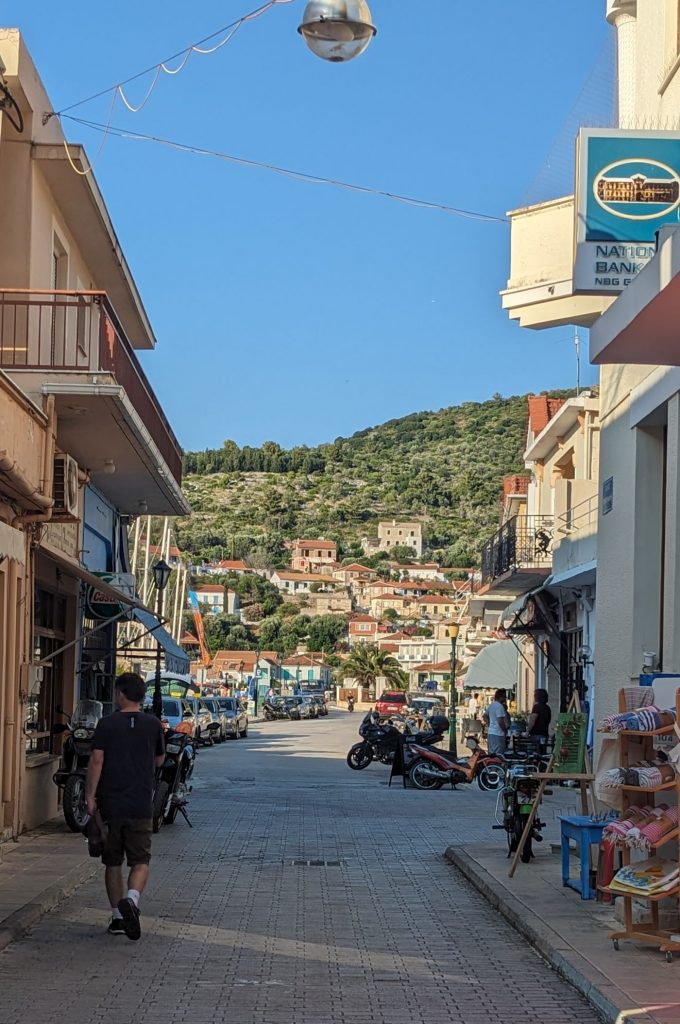
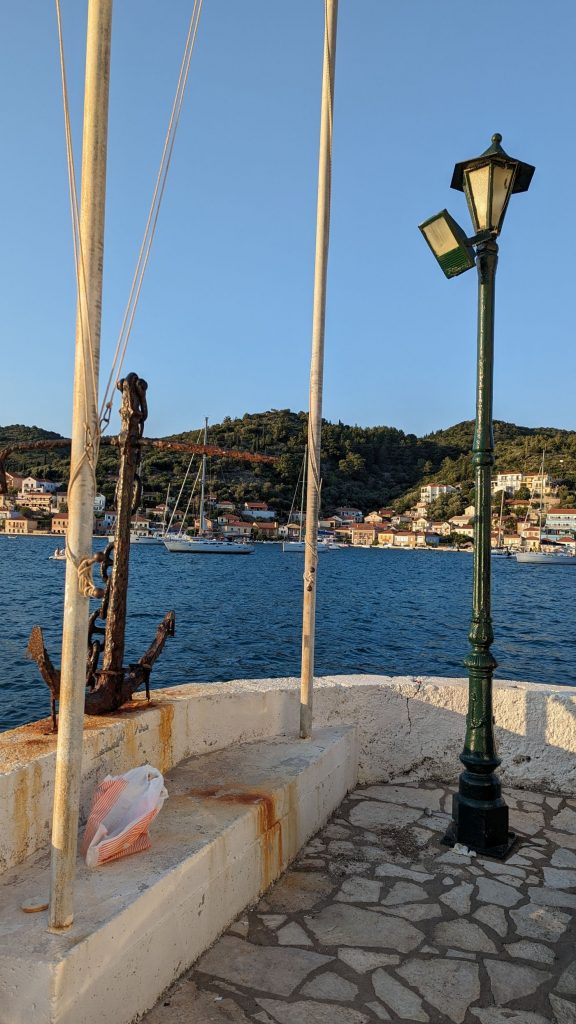
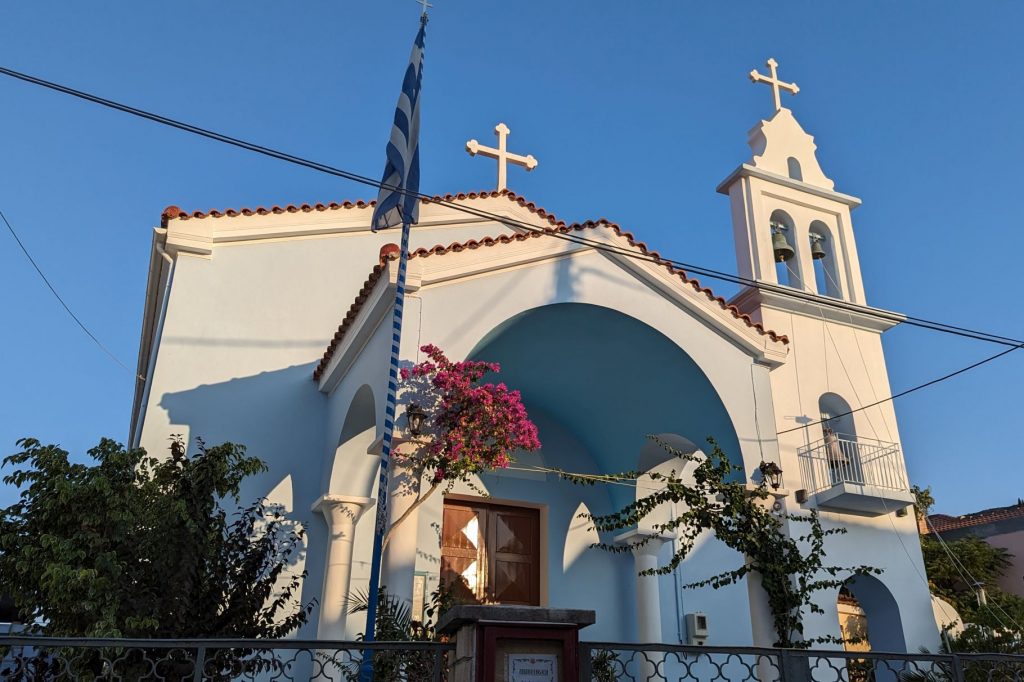
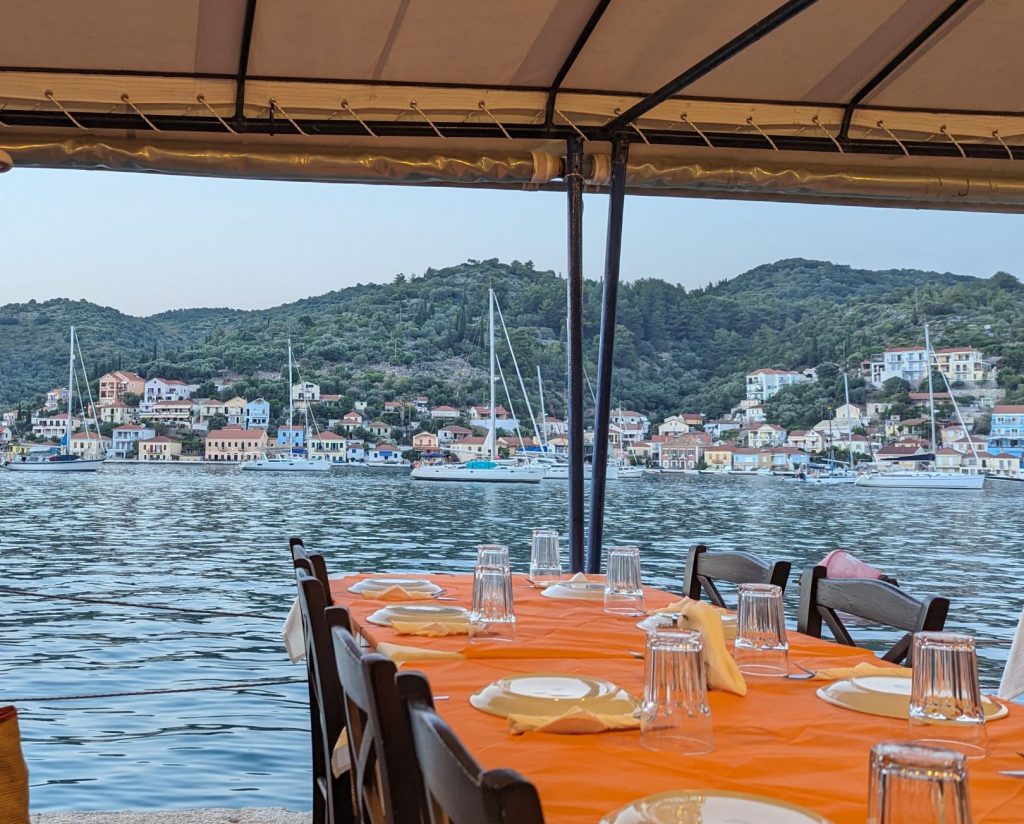
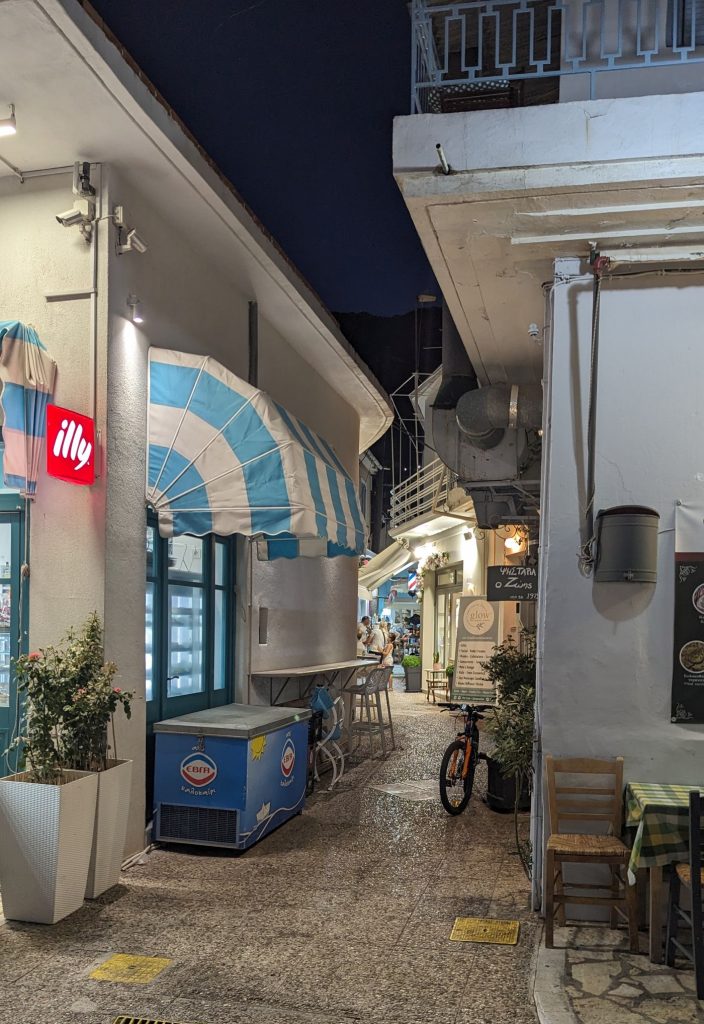
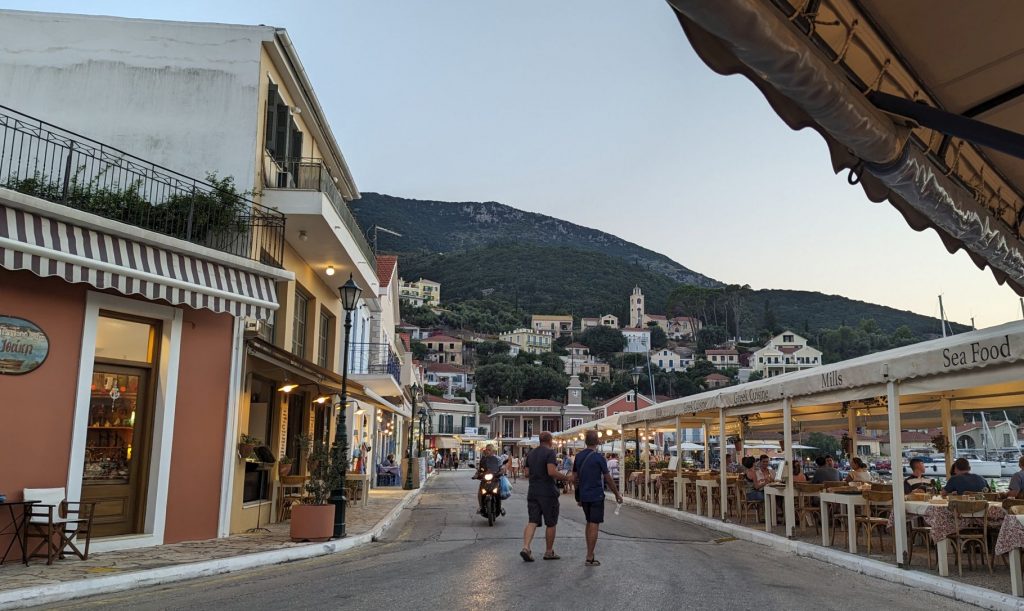
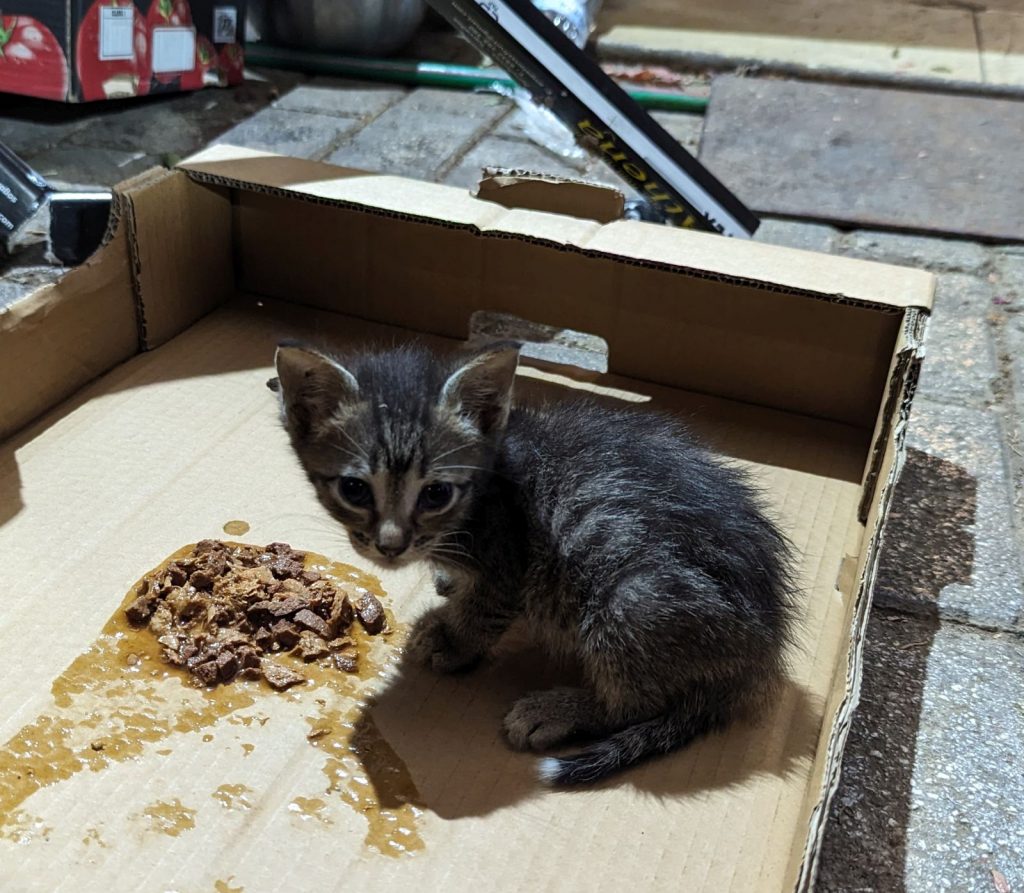
But how cute is this kitty?
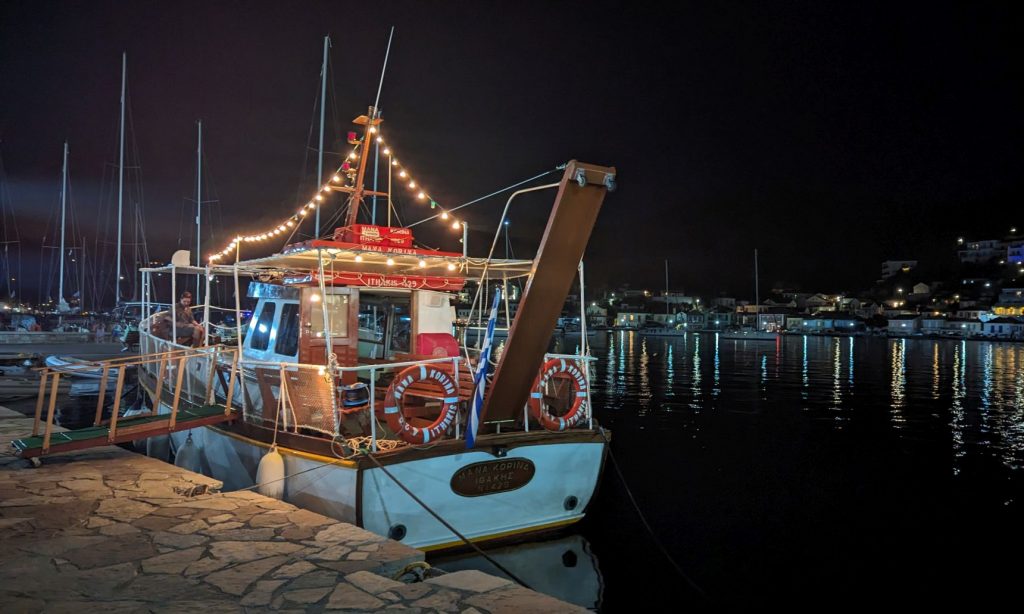
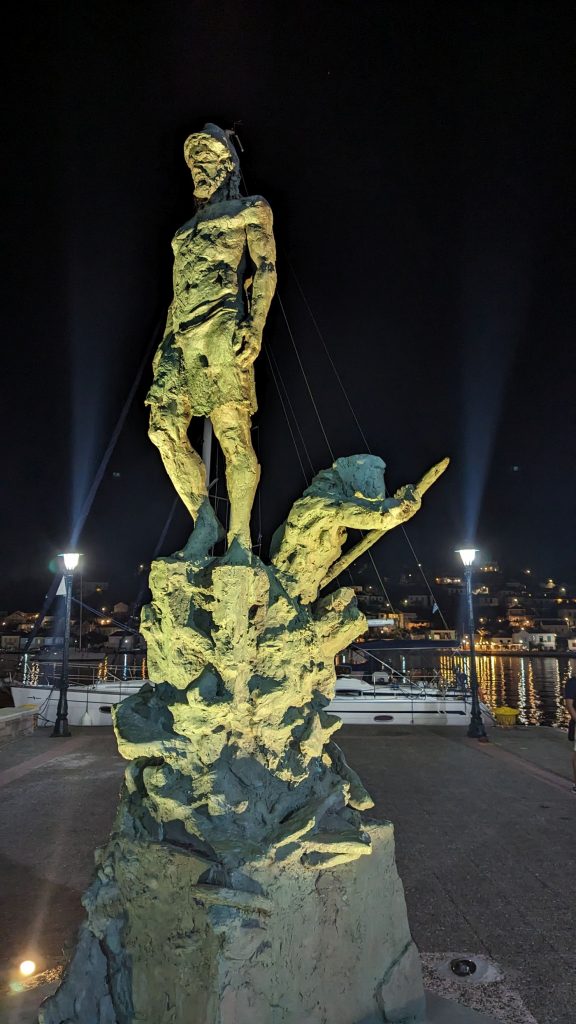
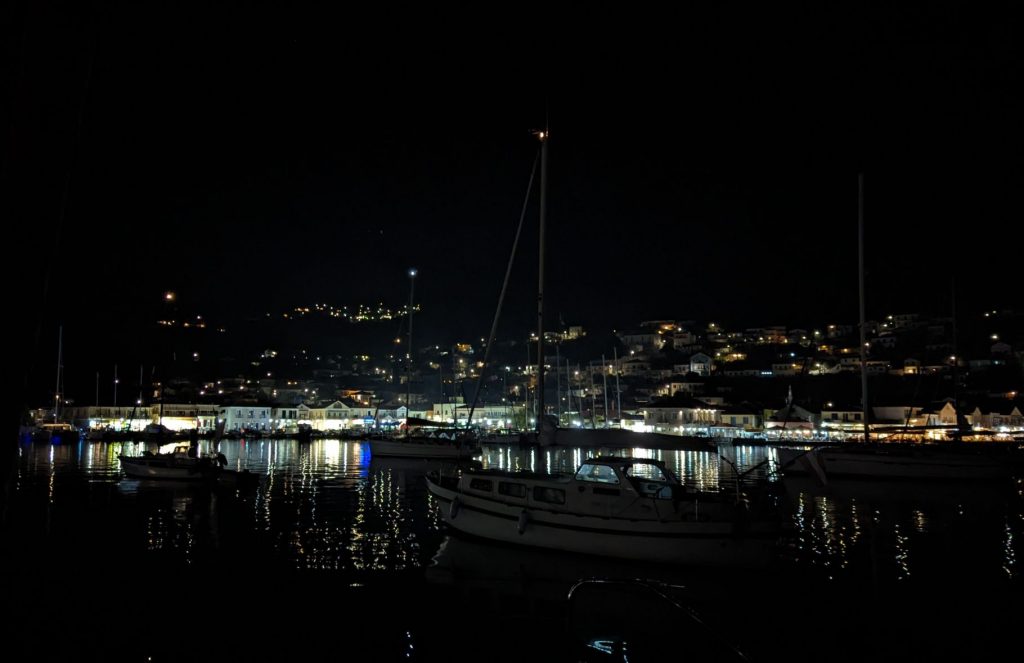
It was now July 19 and we needed to go to Patras (or Patra). It would be pretty much a full day of travel.
Patras is the third-largest city and the regional capital of Western Greece, in the northern Peloponnese, 215 km west of Athens. The city is built at the foot of Mount Panachaikon, overlooking the Gulf of Patras.
Here are a few pictures of the passage and our initial views of Patras.
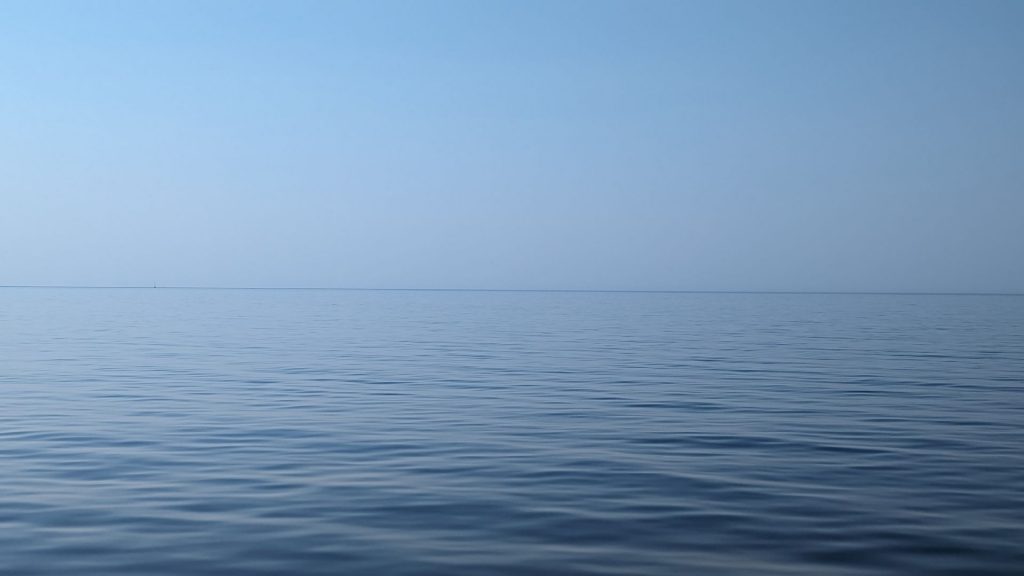
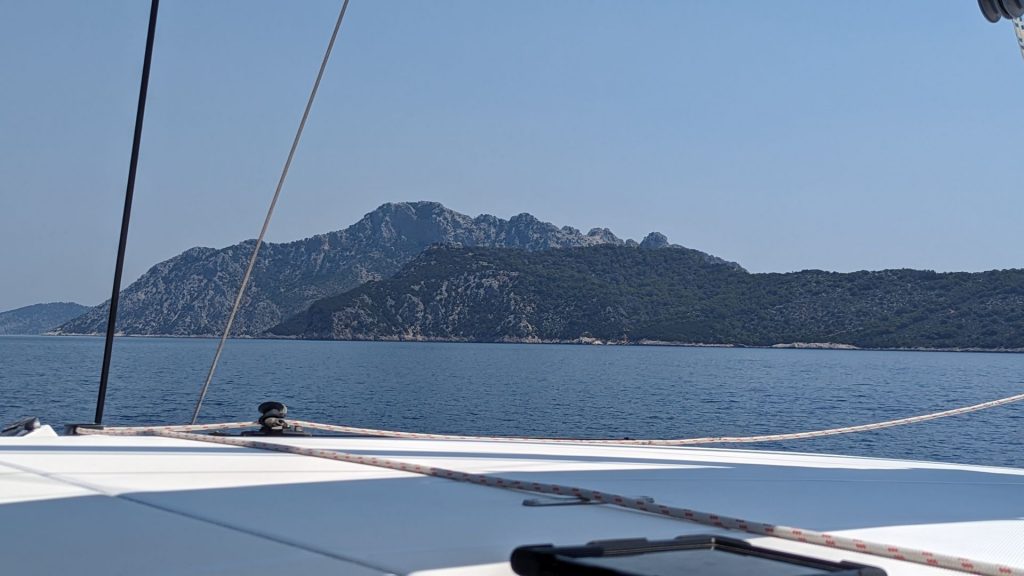
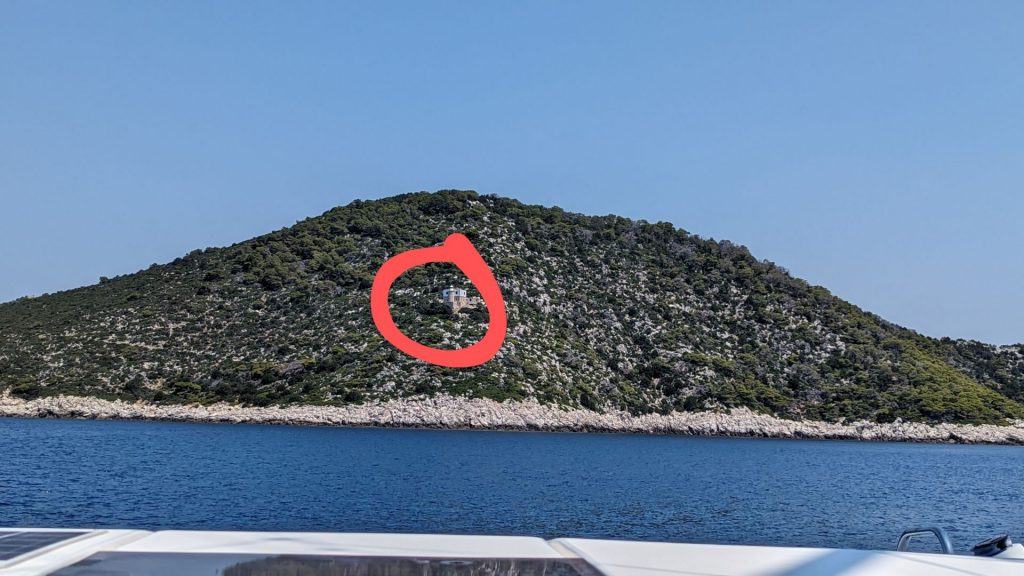
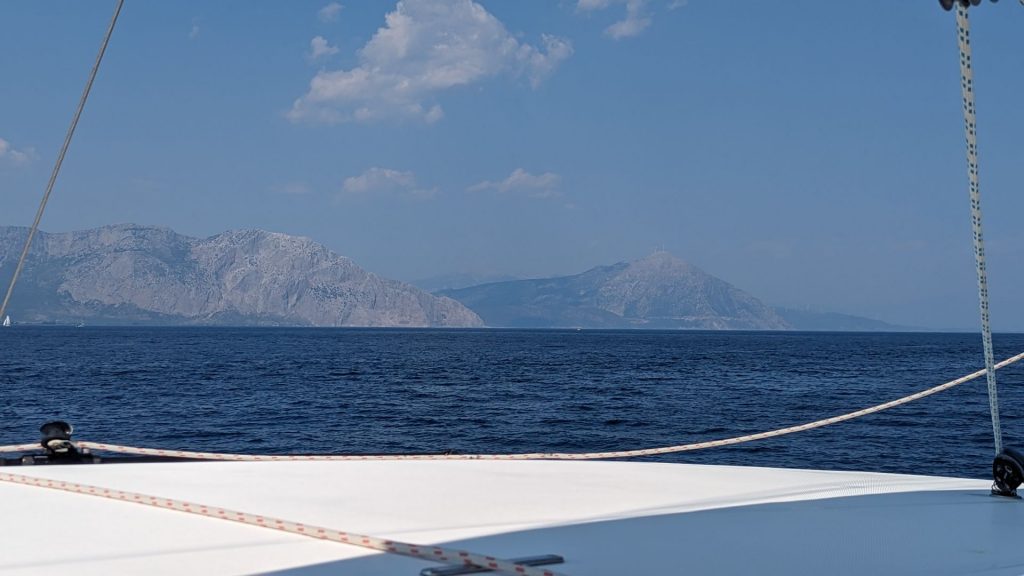
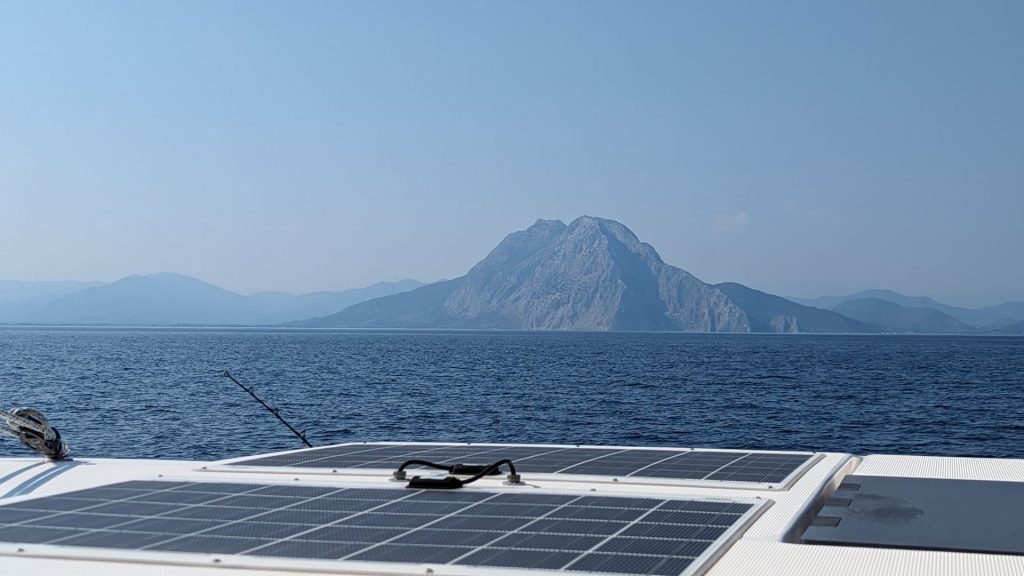
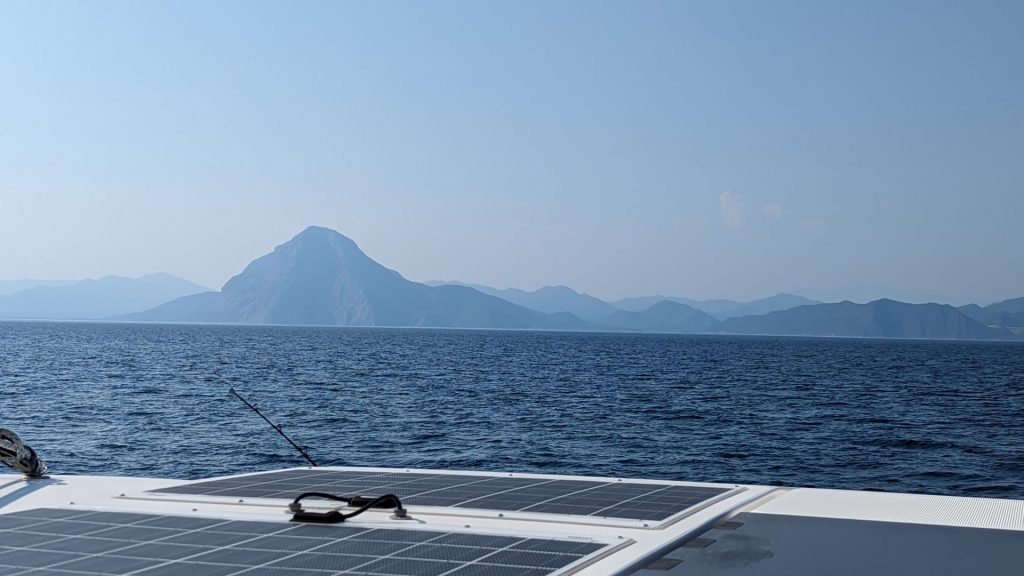
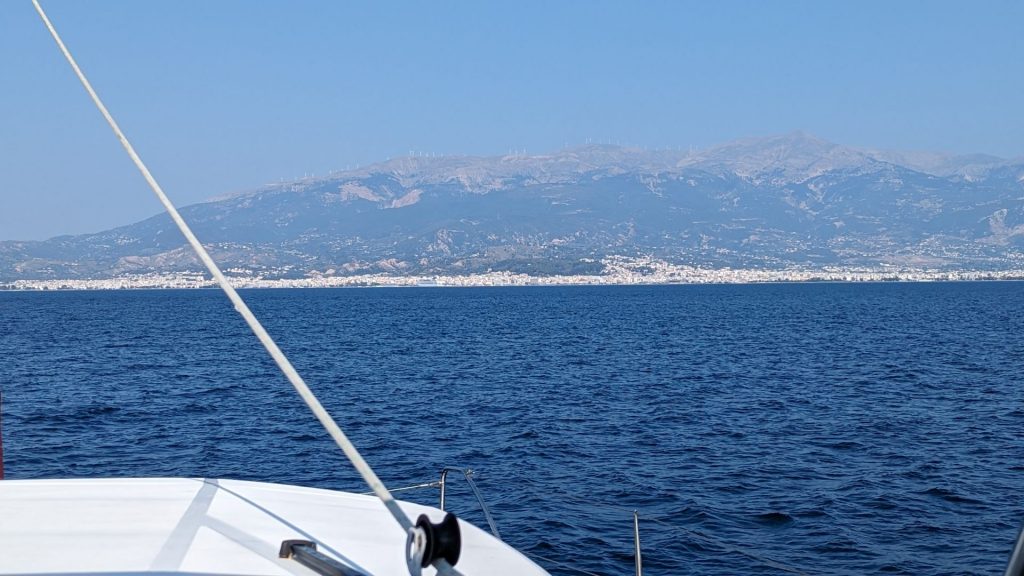
Do you remember the bridge that I sort of fell in love with? Well, it is right by Patras, so we got to see it again. A treat!
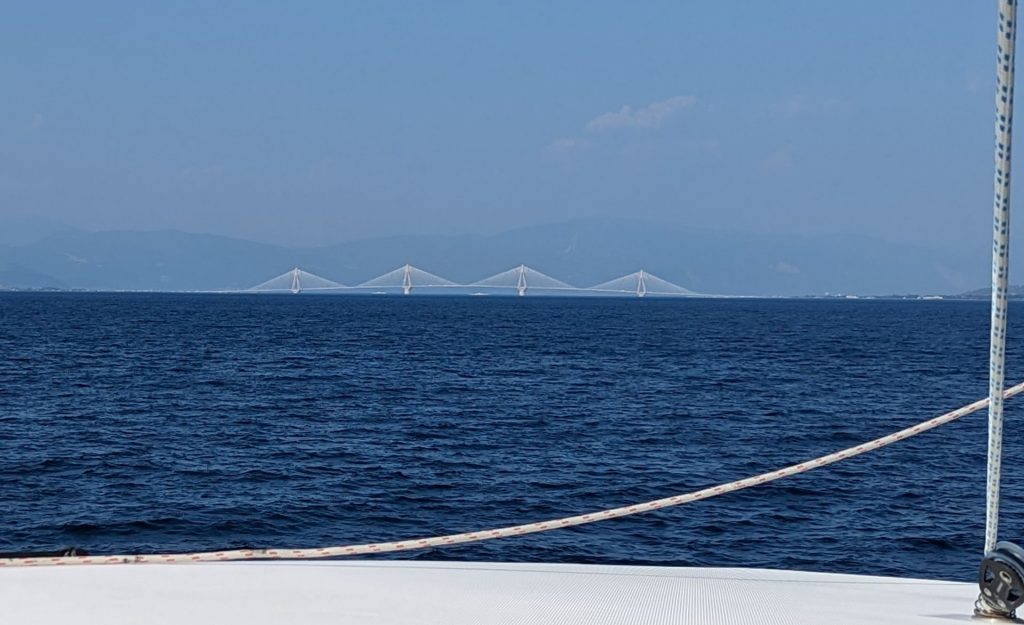
As we were nearing Patras, Michael got the great idea that we should stay in a hotel the next two nights. A hotel with a pool (the pool was my idea). We stayed at the Moxy Patra Marina hotel. It was lovely, had a pool, cool light fixtures (yes, I noticed and even took pictures), a yummy breakfast, a rooftop restaurant/bar, and a gym (I am telling you this because that’s what I read, but we didn’t visit the gym). We loved it!
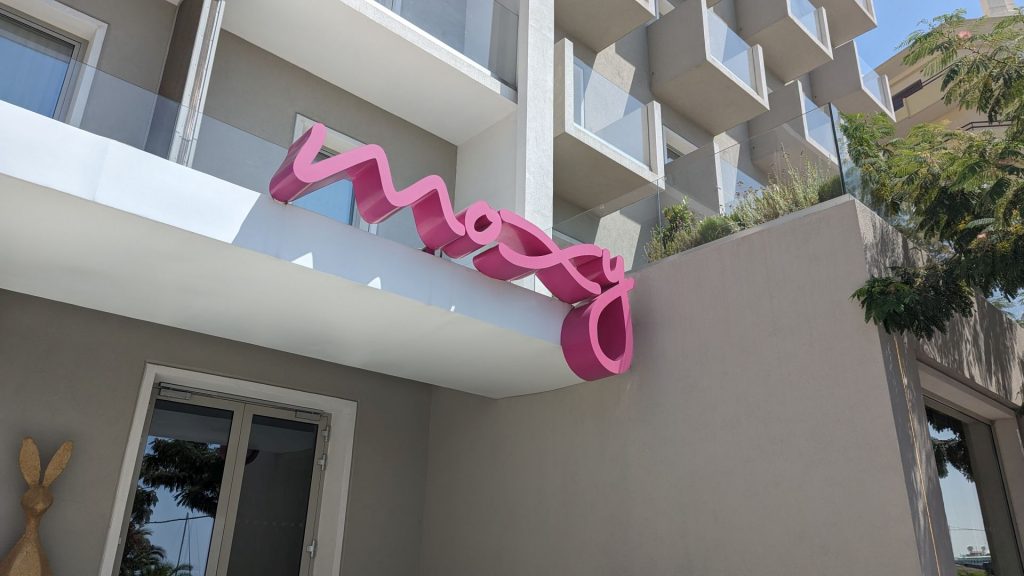
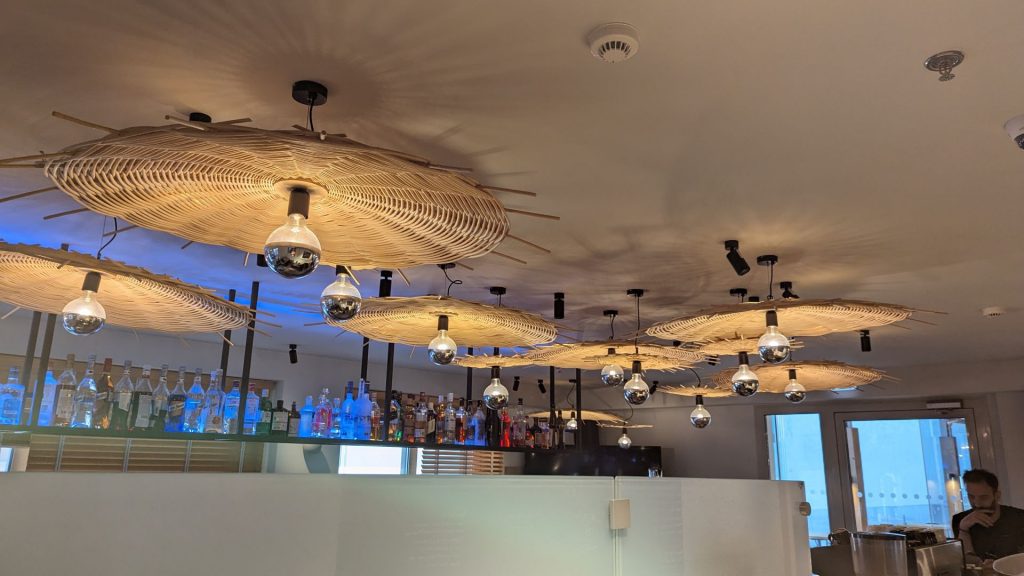
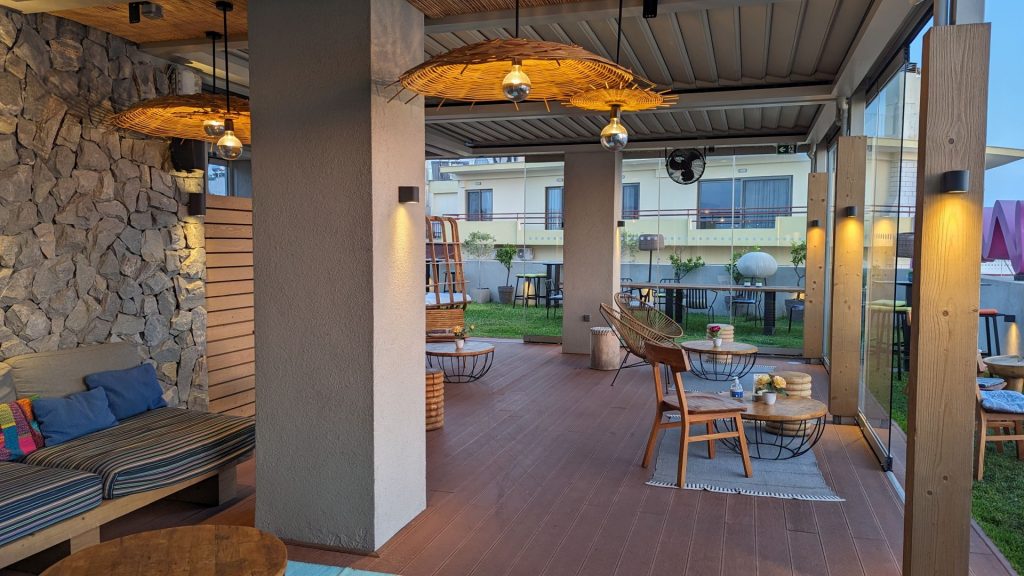
We turned on the TV to chill until we were ready for dinner. Much to our surprise, a Terminator movie was playing. But that’s not all. The subtitles were in Arabic. 🙂
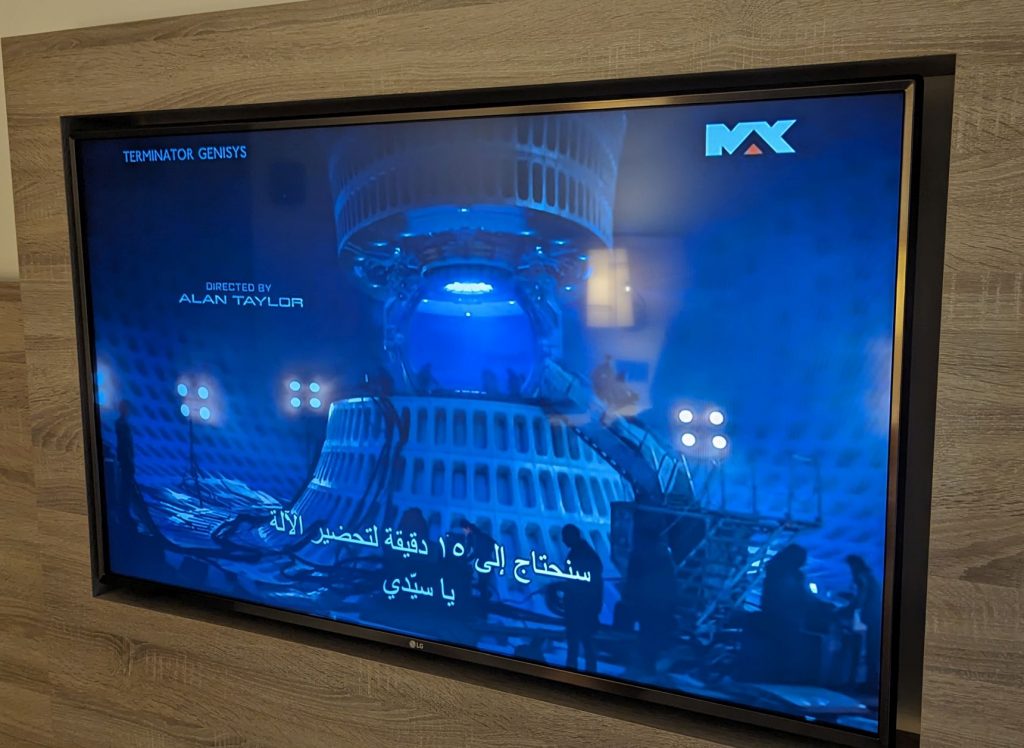
My favorite corner of the room was this corner (the hat is mine, the rest of the stuff is the hotel’s). I am particularly fond of the phone with the fake dial and the pillow’s advice. 🙂
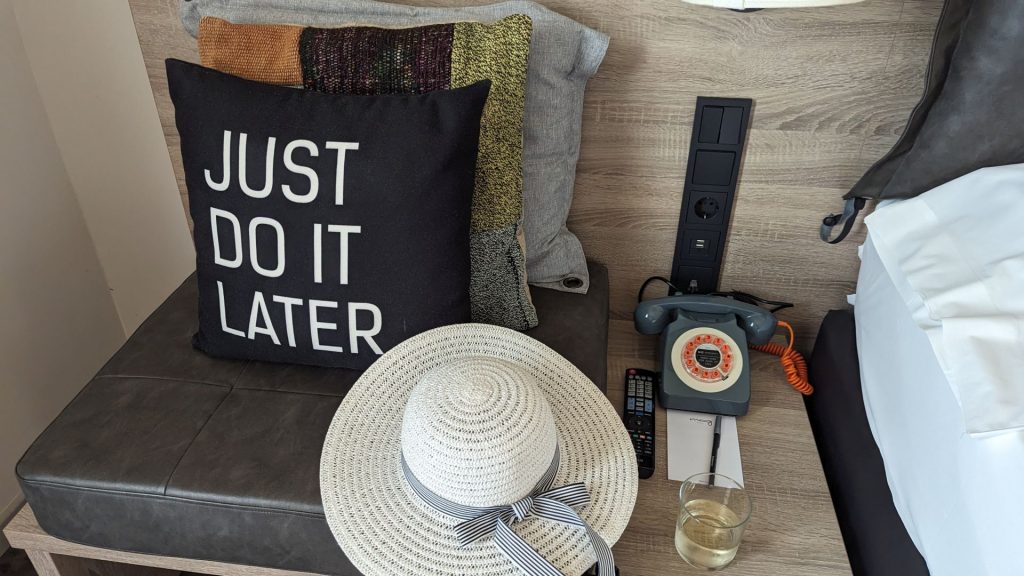
We ate at the rooftop restaurant/bar the first night. We didn’t feel like going out in the heat, so it was just what the doctor ordered.
Our main goal, other than cooling off in a lovely hotel, was to visit the Achaia Clauss winery. This winery is one of the oldest (founded 1861) and most famous wineries in all of Greece. For Patras, this is a historical winery as it contributed to the financial development of the town in the middle 19th century. It produces the best Mavrodafni (or Mavrodaphni or Mavrodaphne), a sweet and strong wine. This red wine, first produced by Gustav Clauss in 1873, in his vineyard, was named “Mavrodafni,” in honor of his Greek lover with the beautiful black eyes, Daphne, who died at a young age.
Gustav Clauss is considered the founder and establisher of the institution of Wine Tourism in Greece, following the visit of Princess Sissy of Austria-Hungary in 1885, for whose sake he even named the Cellar “Imperial” (Imperial Cellar).
Fun tip: According to legend, the Achaia Clauss was so popular with the Nazis that they spared the winery when they invaded Greece during World War II. (Prudent choice.)
Michael wasn’t feeling it, so Jennifer and I visited the winery by ourselves. It starts with a tour of the winery accompanied by a history lesson (here is a link to some of the history you can check out if are interested) of the winery and barrel making. It was super interesting. The tour also includes a tasting of four wines that each attendee chooses from a list of options.
In addition to its strong historical background, the “wine castle” is beautiful both inside and out. As per usual, pictures.
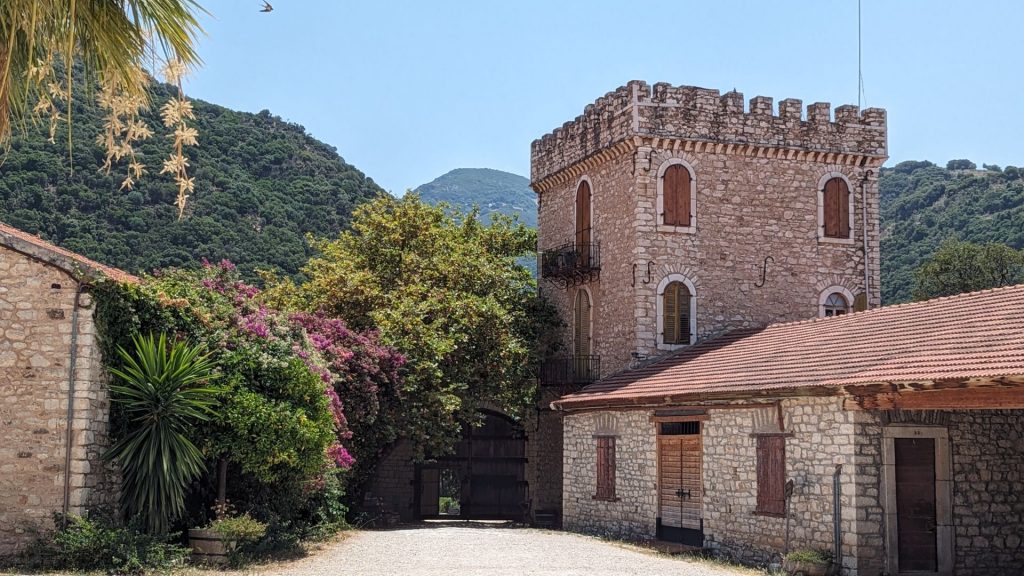
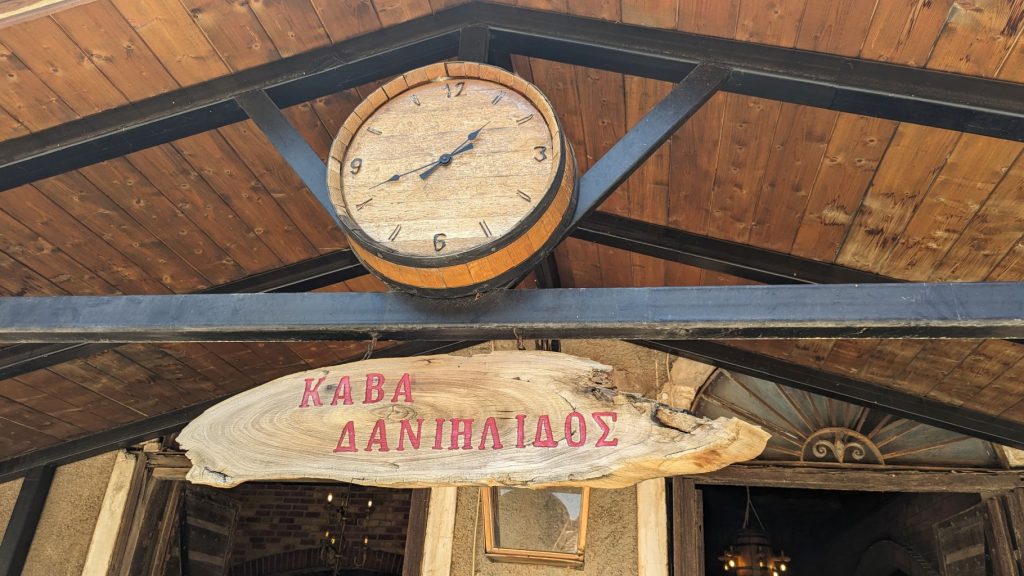
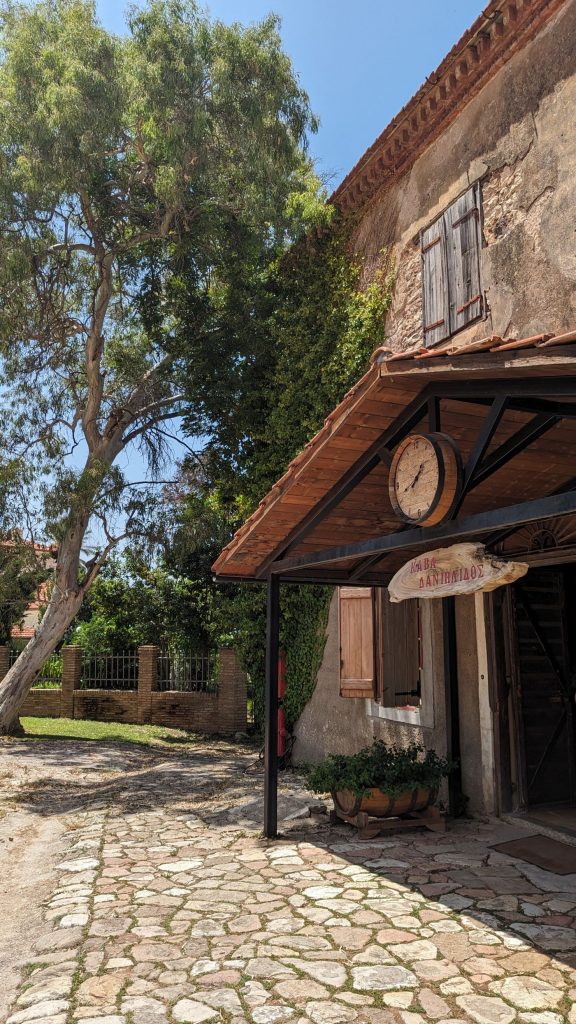
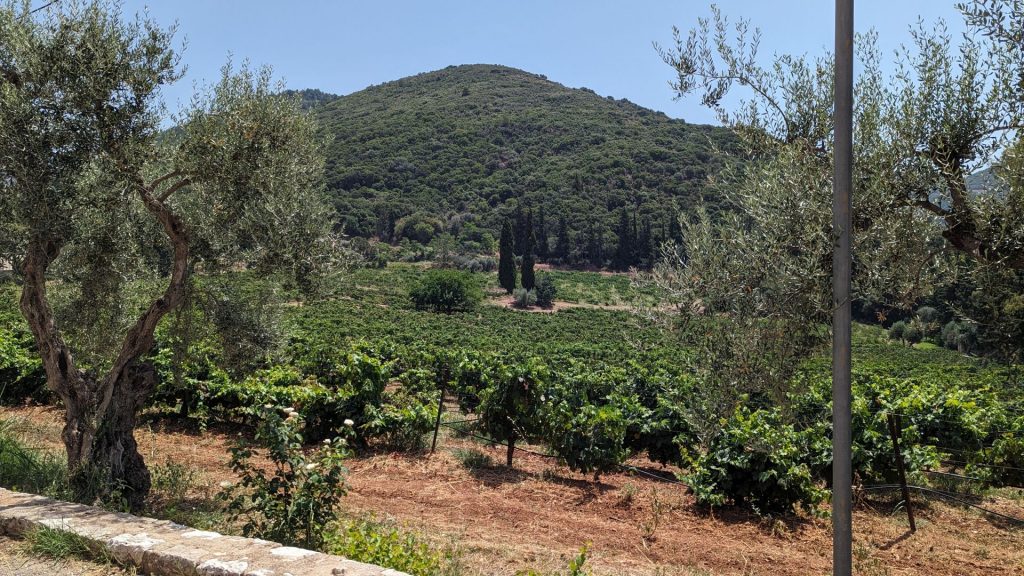
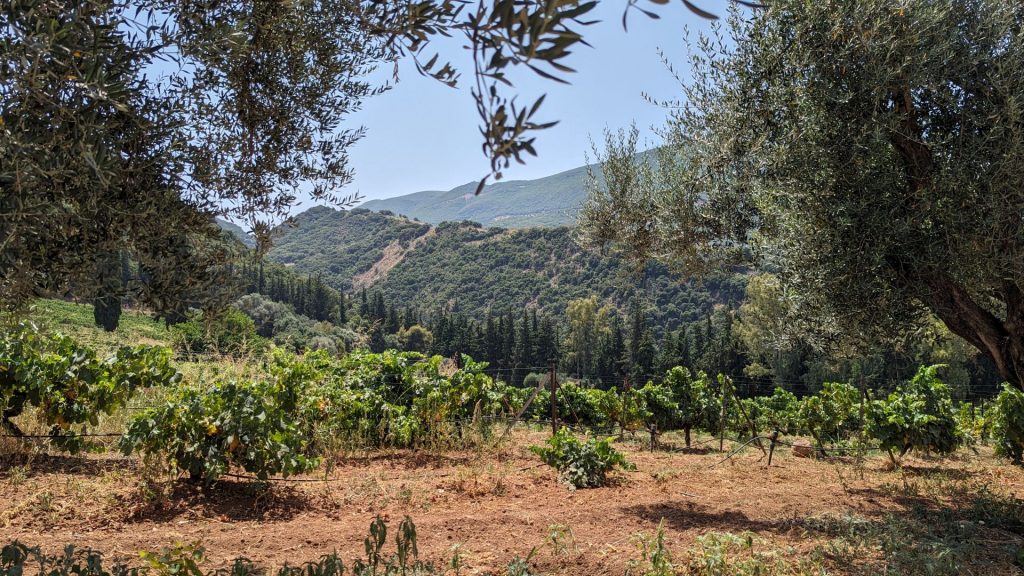
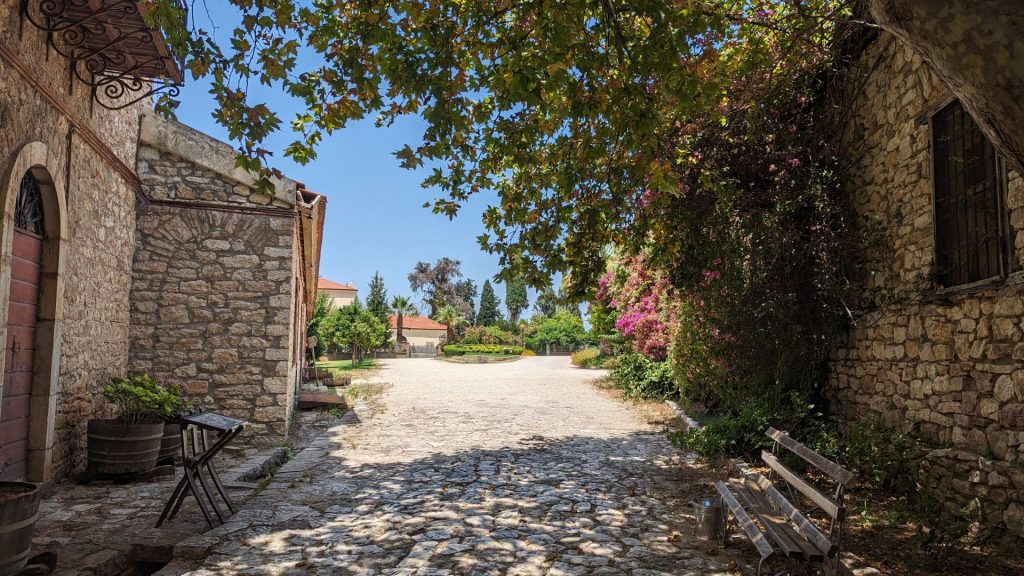
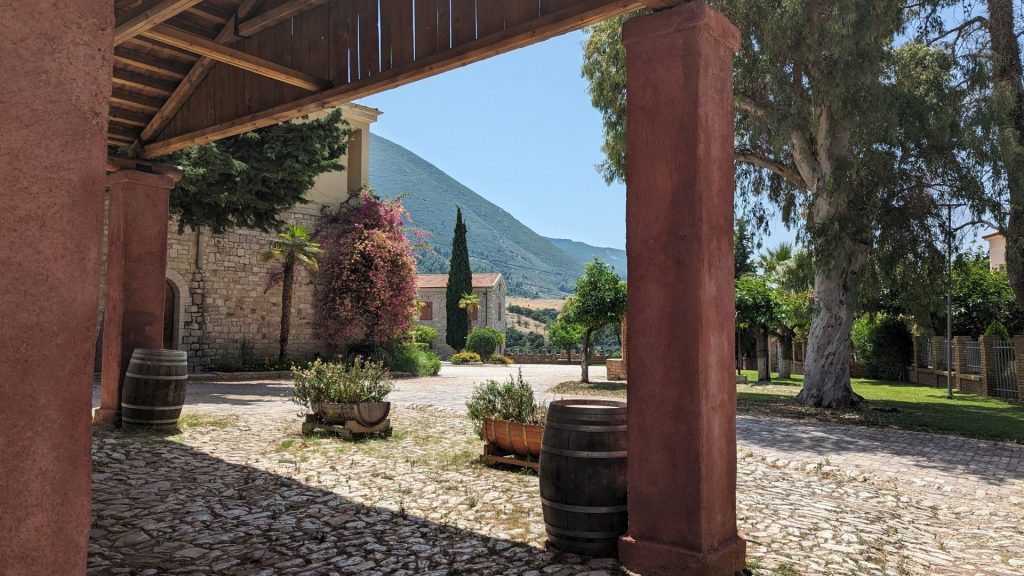
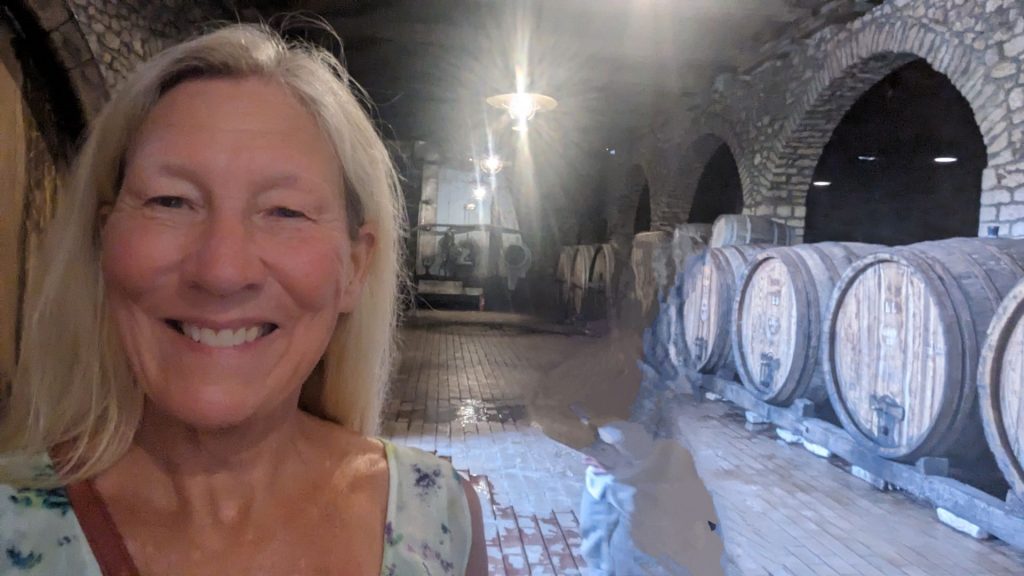
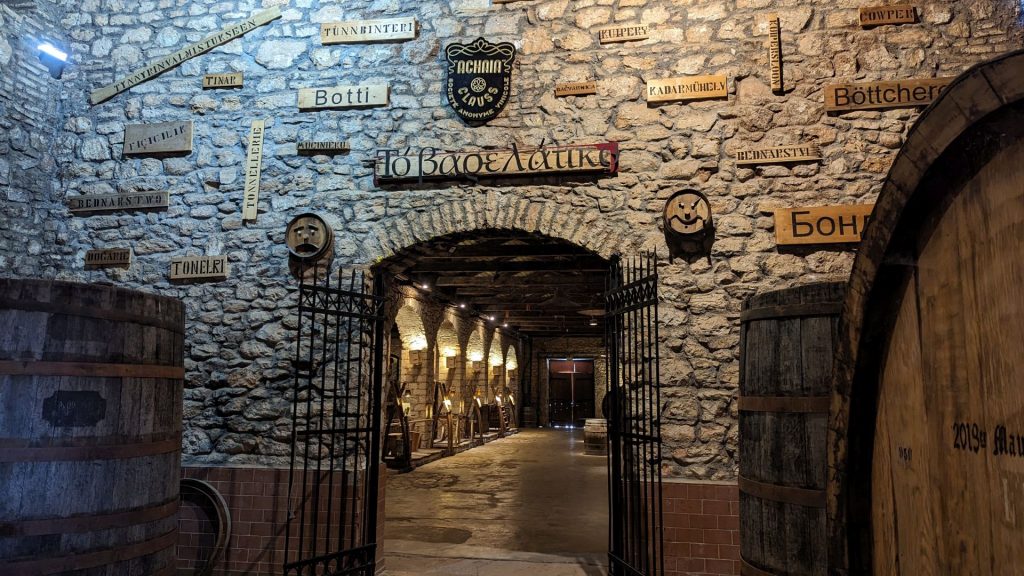
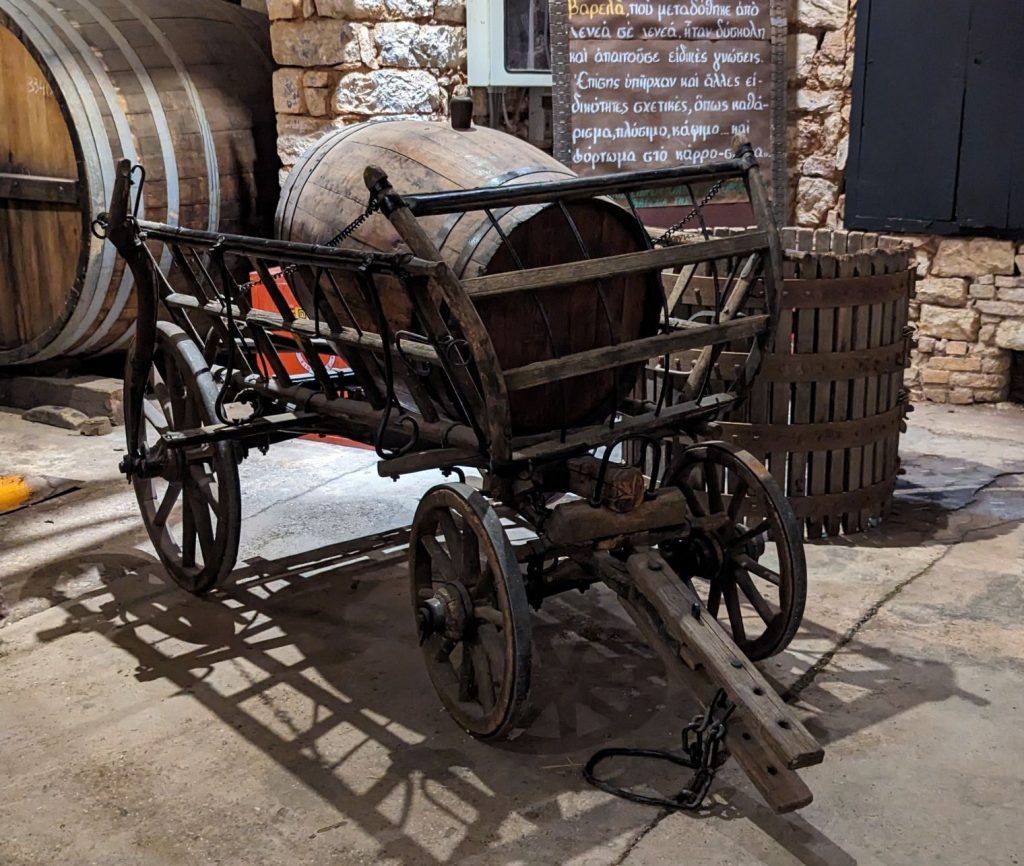
Patras’ renown is partly due to its carnival. One of the world’s largest after Venice and Rio de Janeiro, it attracts some half a million people mid-January to mid-March. The Treasure Hunt remains a highlight: Hundred-strong teams, many with goofy names like “Blue Flames” or “Golf Sexperience” comb the city for hidden prizes. Balls and concerts abound as well, along with a confetti fight and “chocolate war.” Karnavalos, the king puppet, leads the final, wild procession on the day before Orthodox lent. After a solemn farewell, he is burnt on the city pier, as fireworks light up the night sky. How I wish we had been here during the carnival!!!
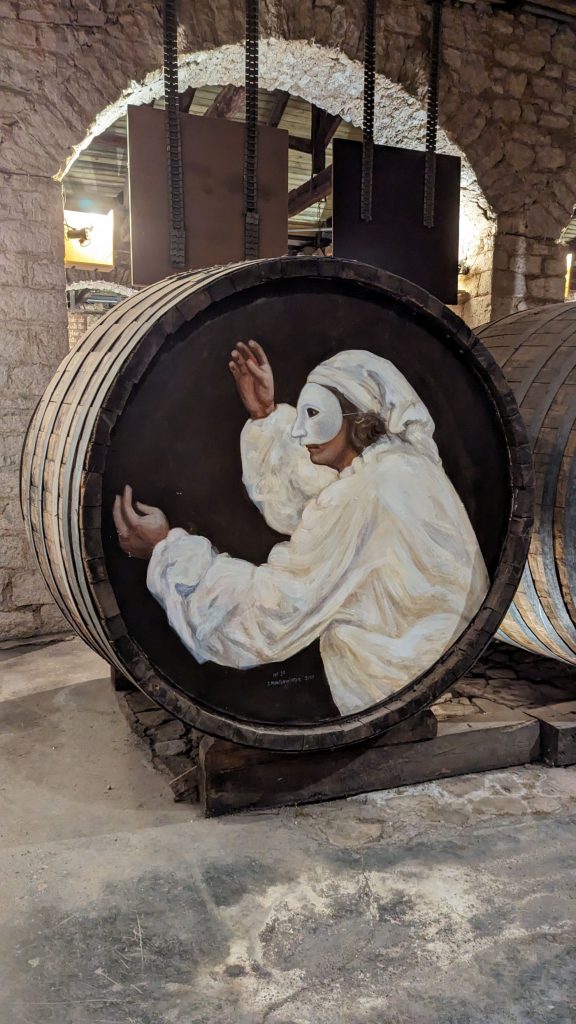
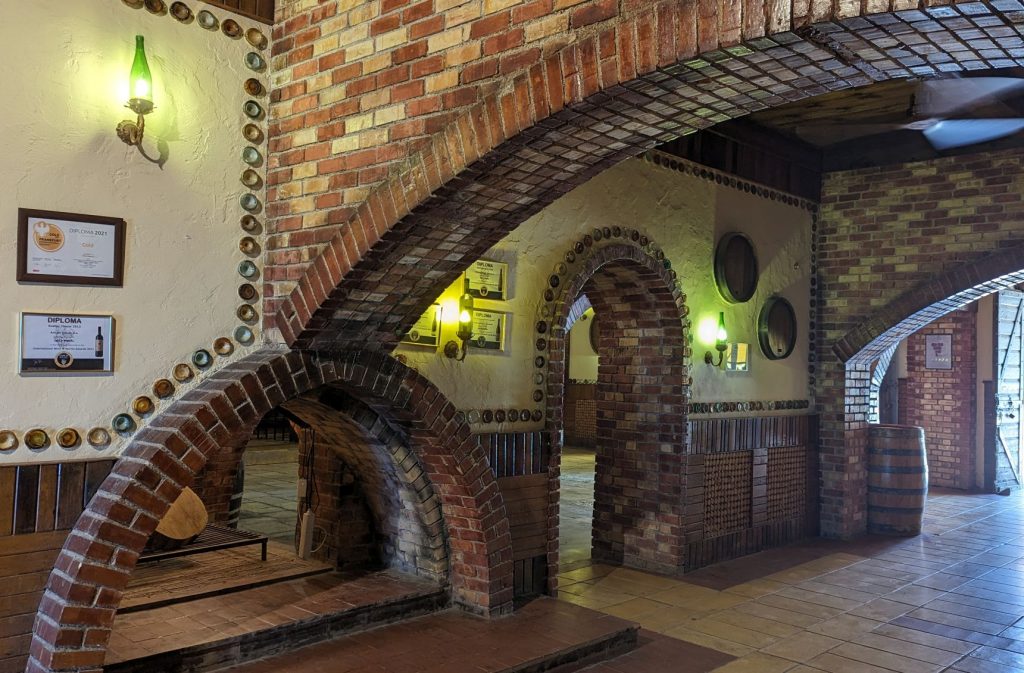
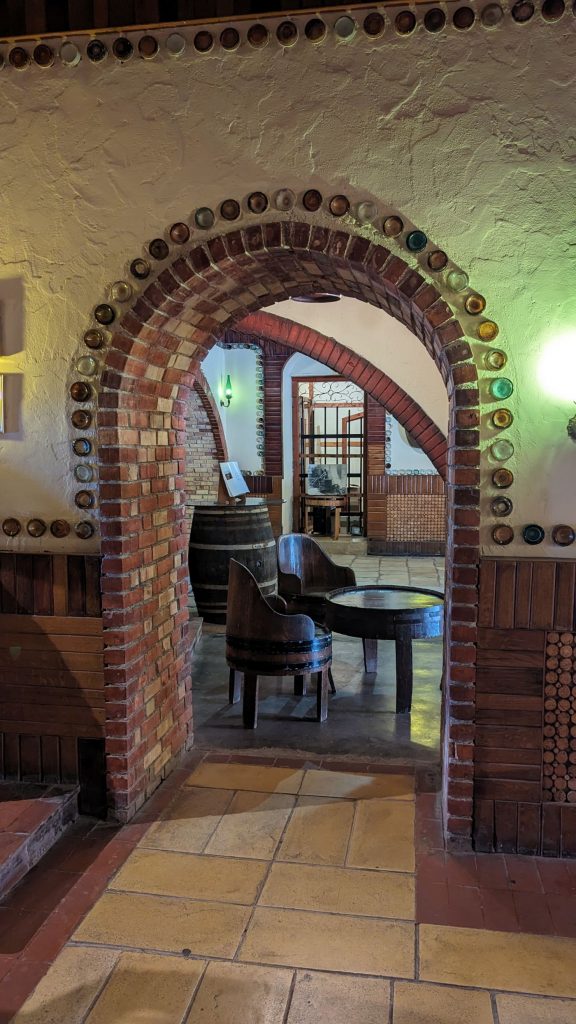
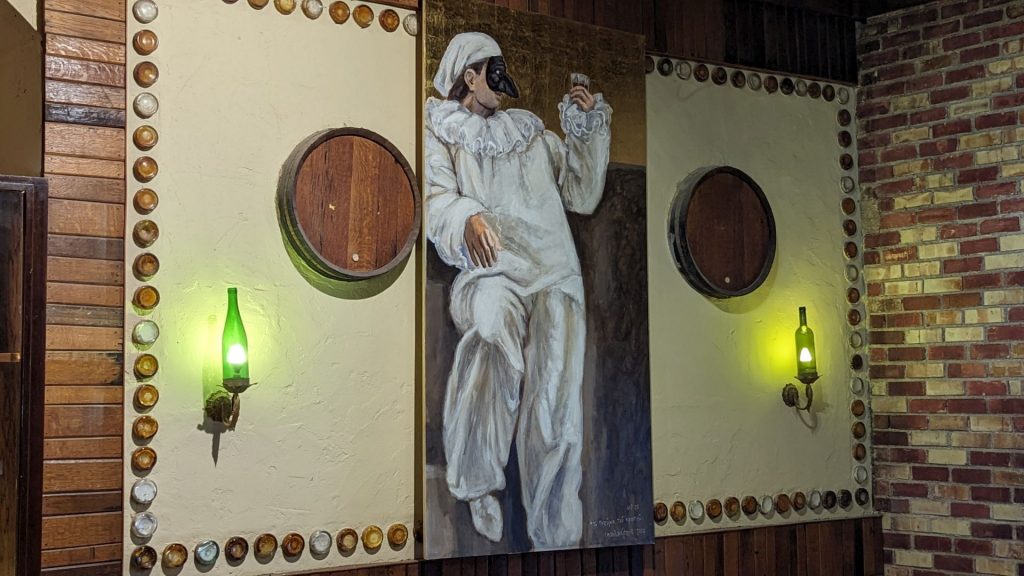
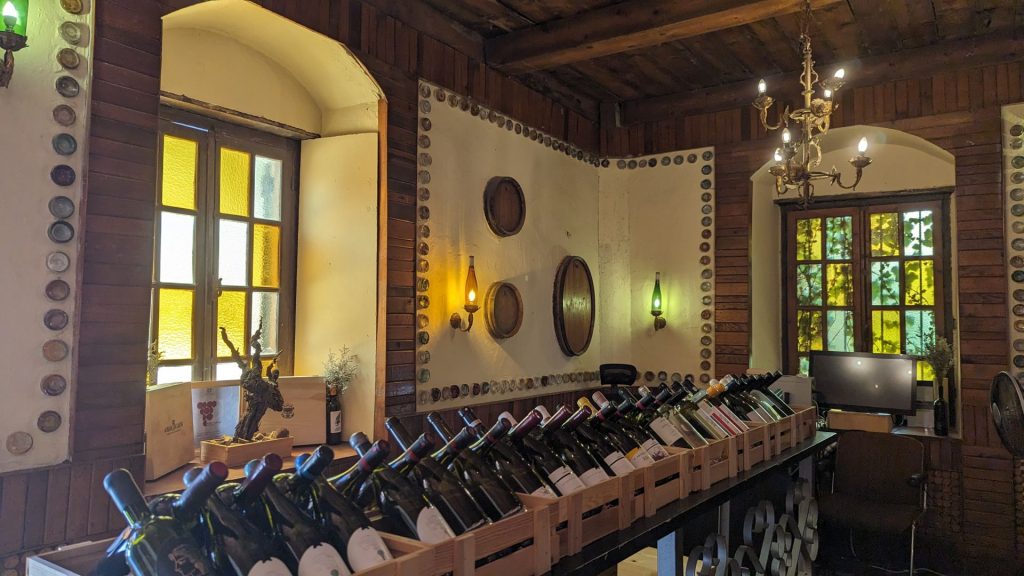
It will shock you to learn that I bought three bottles. I mean, only three bottles.
It was time to leave the winery and go for a swim! Here are the pictures I took as we walked away from this beautiful place.
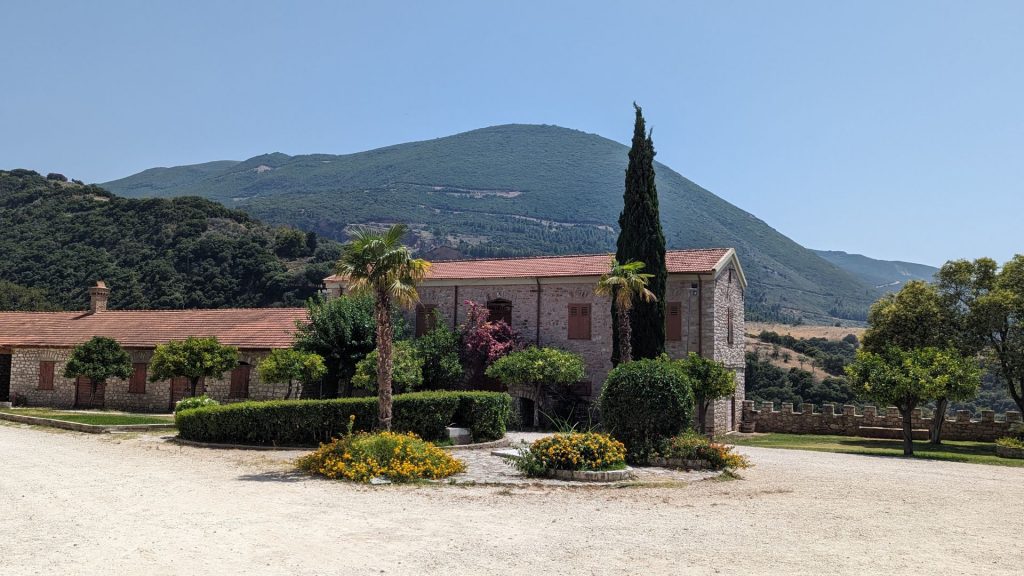
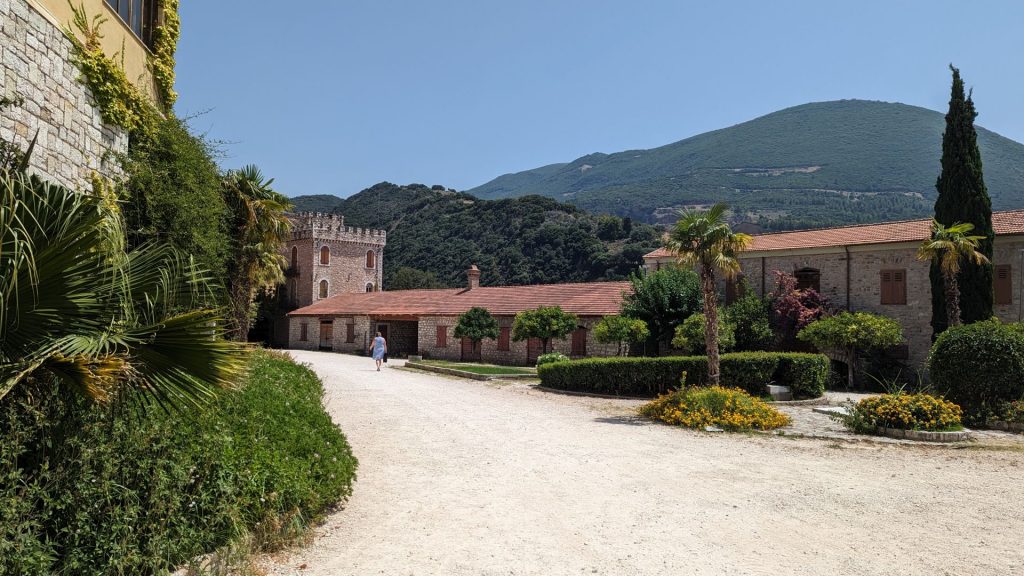
Swimming laps in the pool was just what I needed after our visit to the winery. It felt heavenly! Soon it was time for dinner.
We had dinner at this place (pictured below) our second evening in Patras and our last night with Jennifer. The waiter was super friendly. After dinner, he brought us a glass of Tentura. I’d read about it and was delighted to have it served to us. What is it, you ask? Tentura, the nectar of Patras, is a local liqueur produced in Patras since the 15th century. And gosh darn, if the waiter didn’t know where we could buy a bottle! So we did!
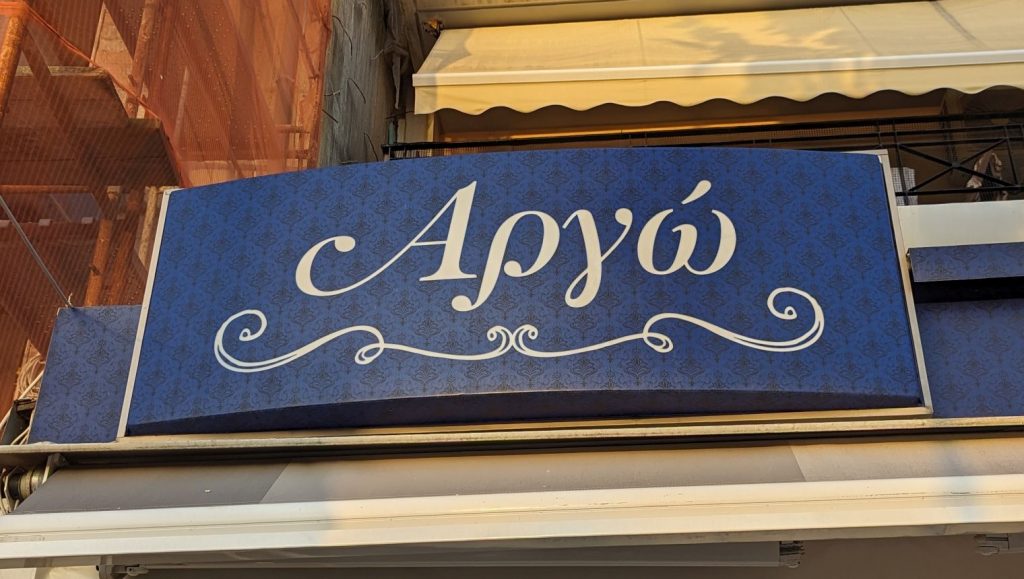
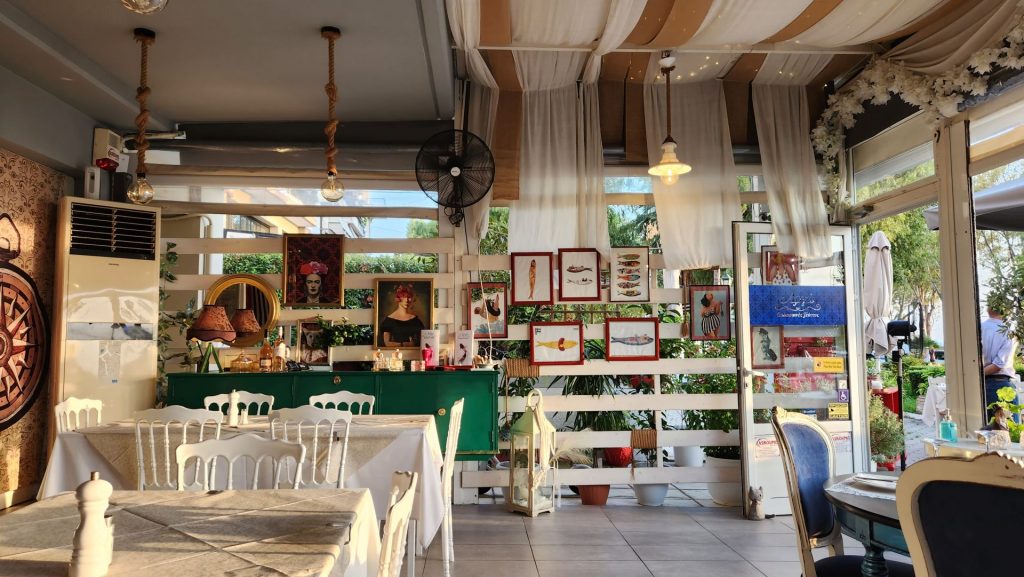
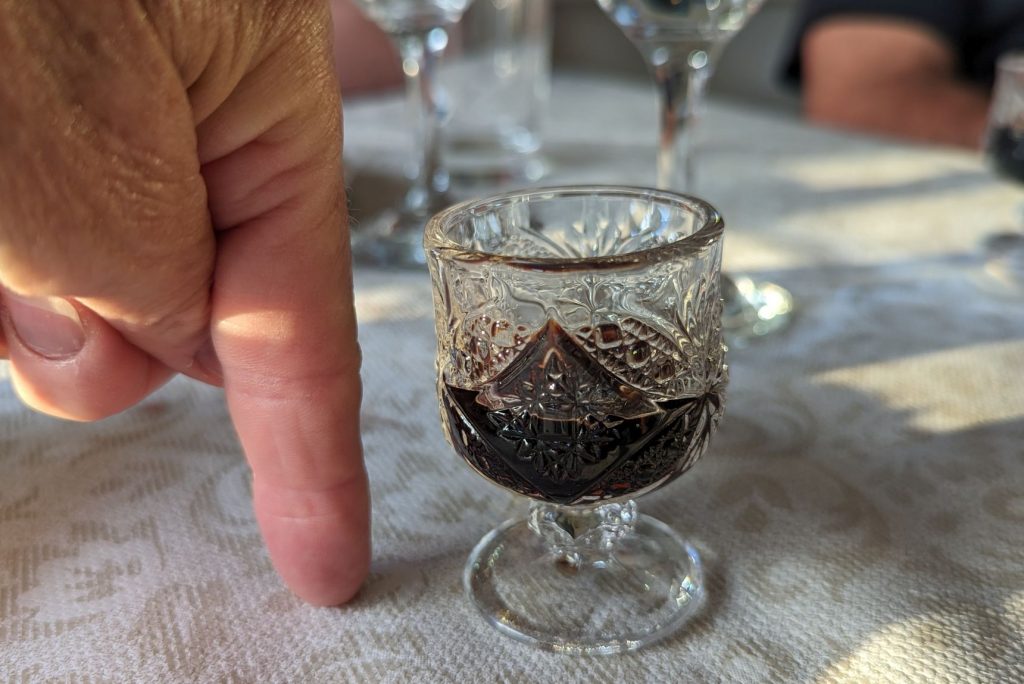
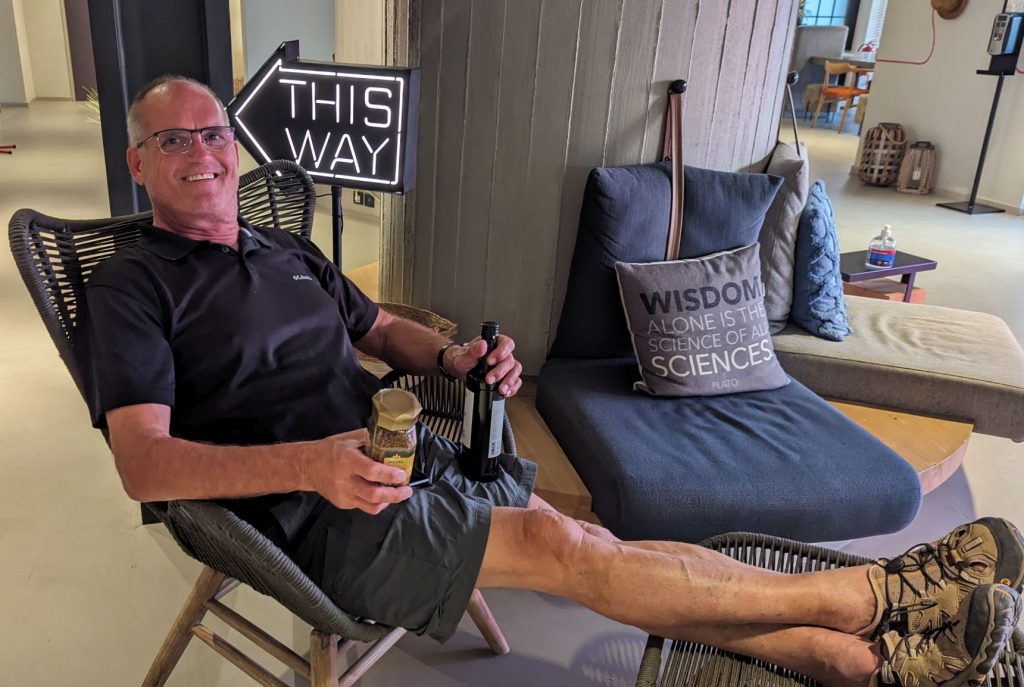
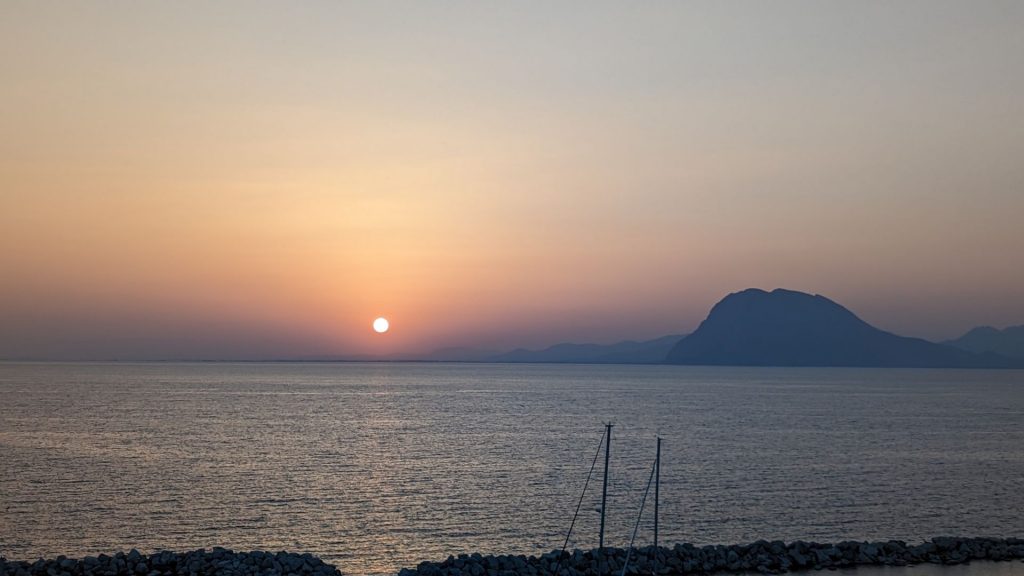
And that’s that. Michael and I will be heading back north, eventually ending up in Albania to get out of Schengen. See you next time!
